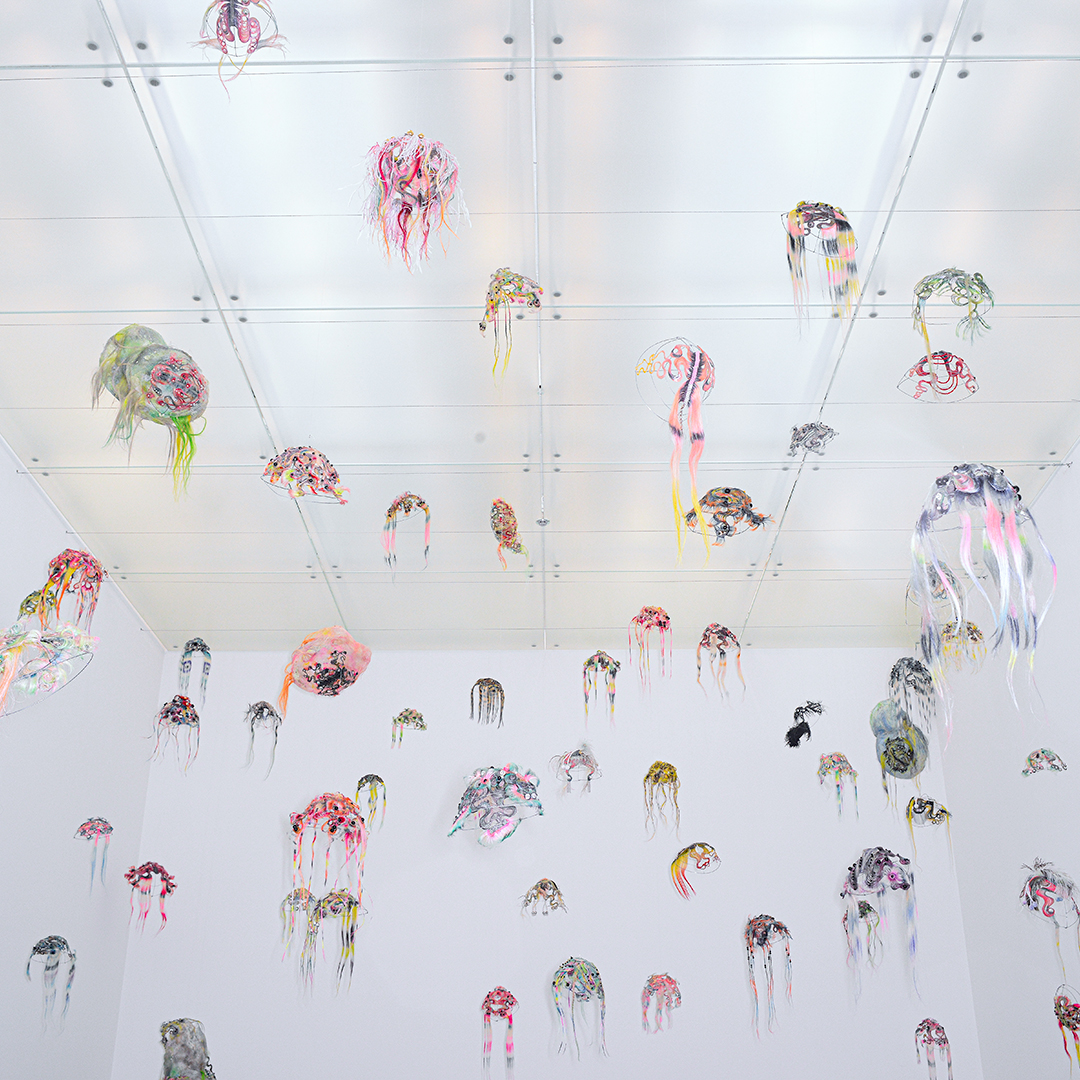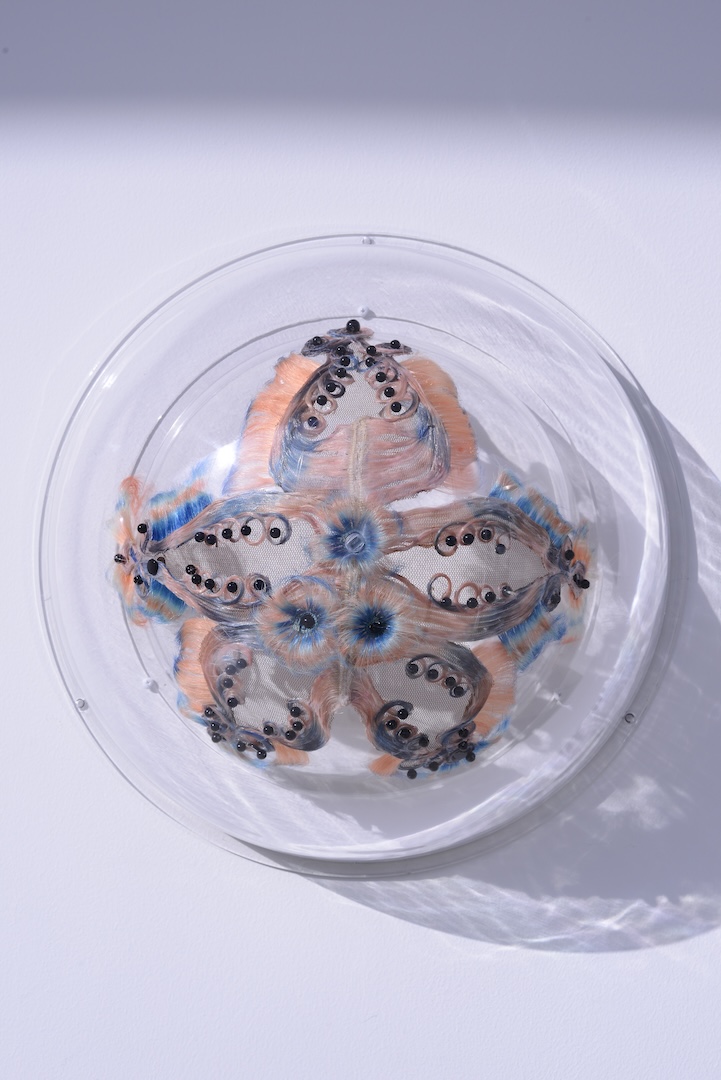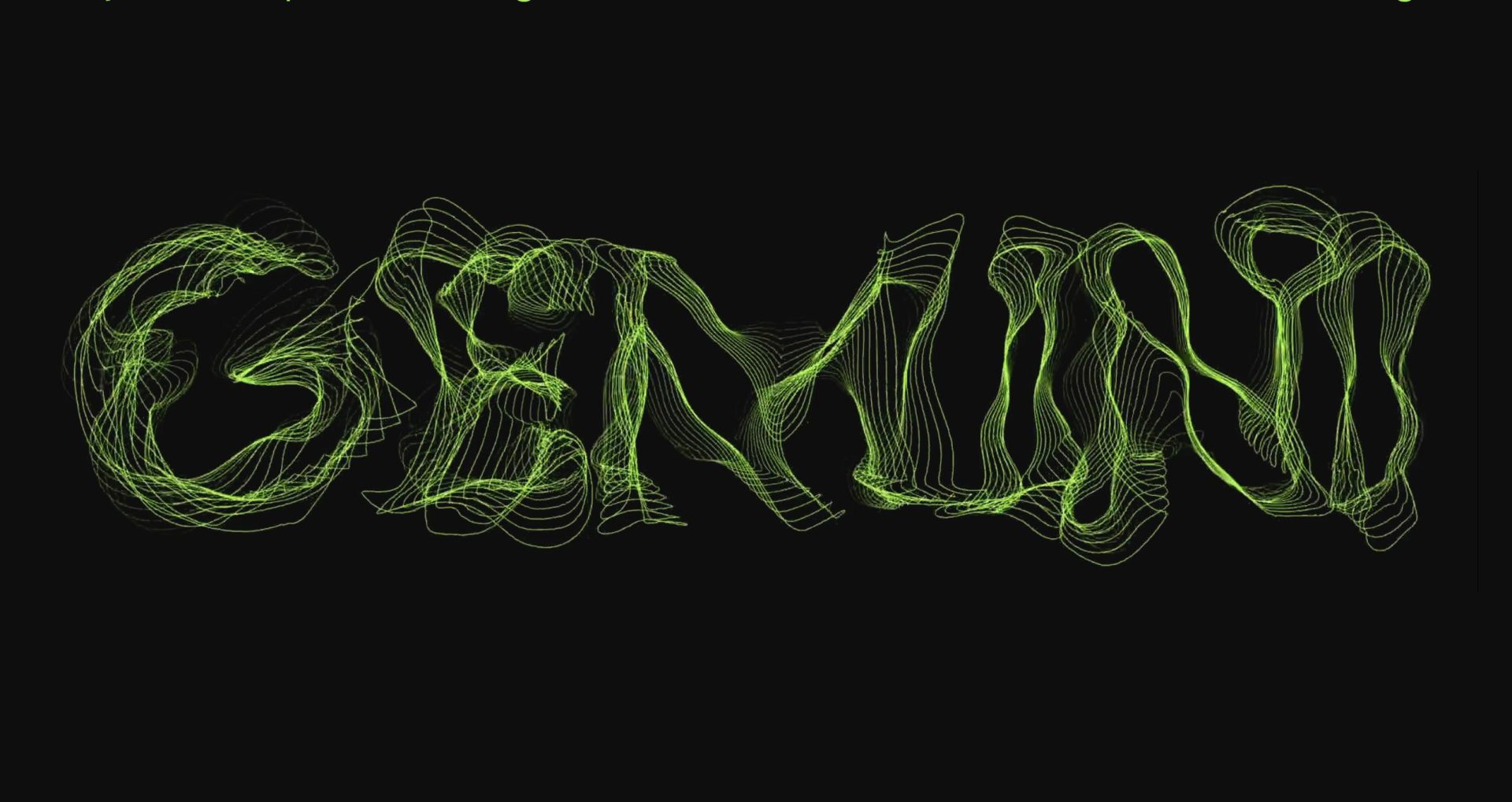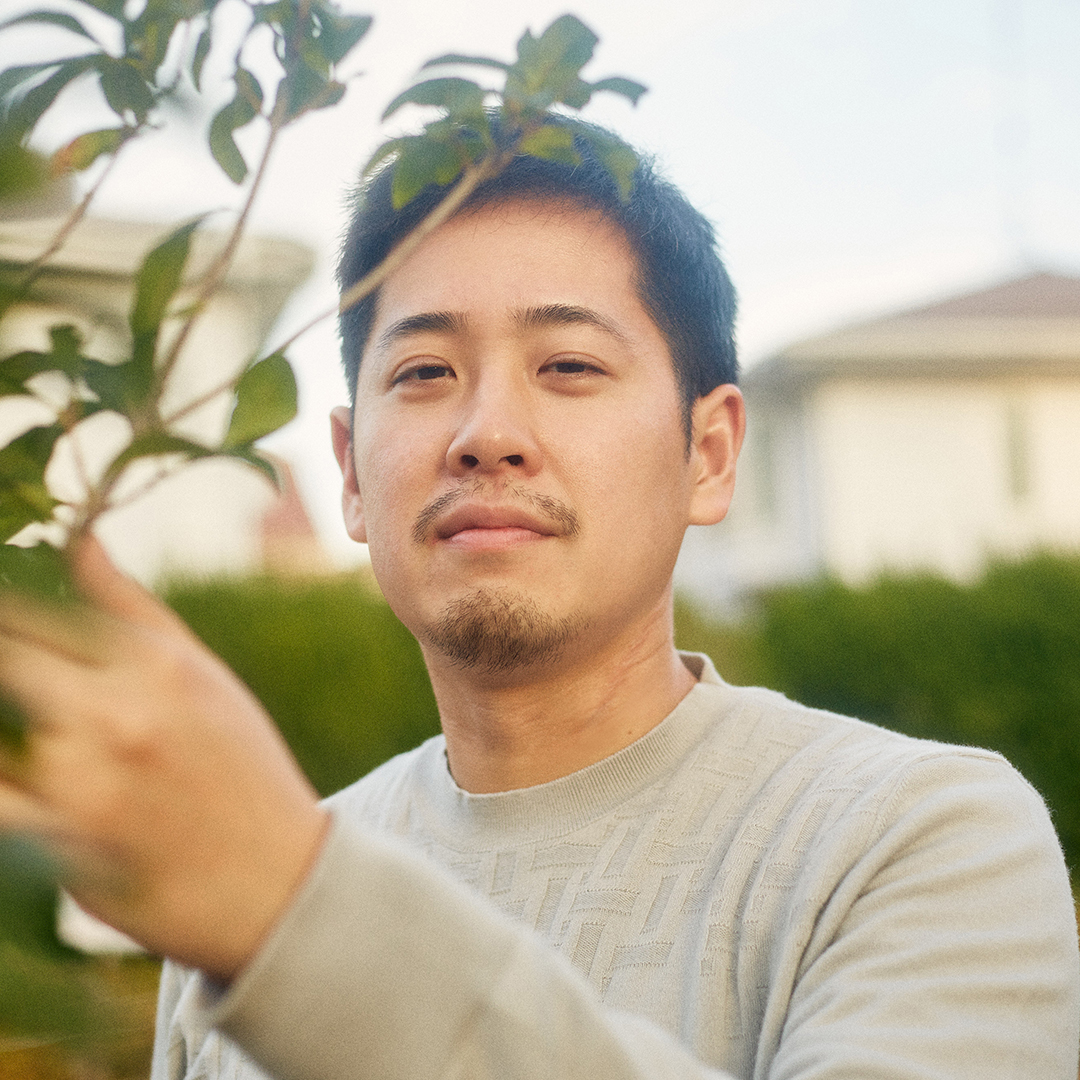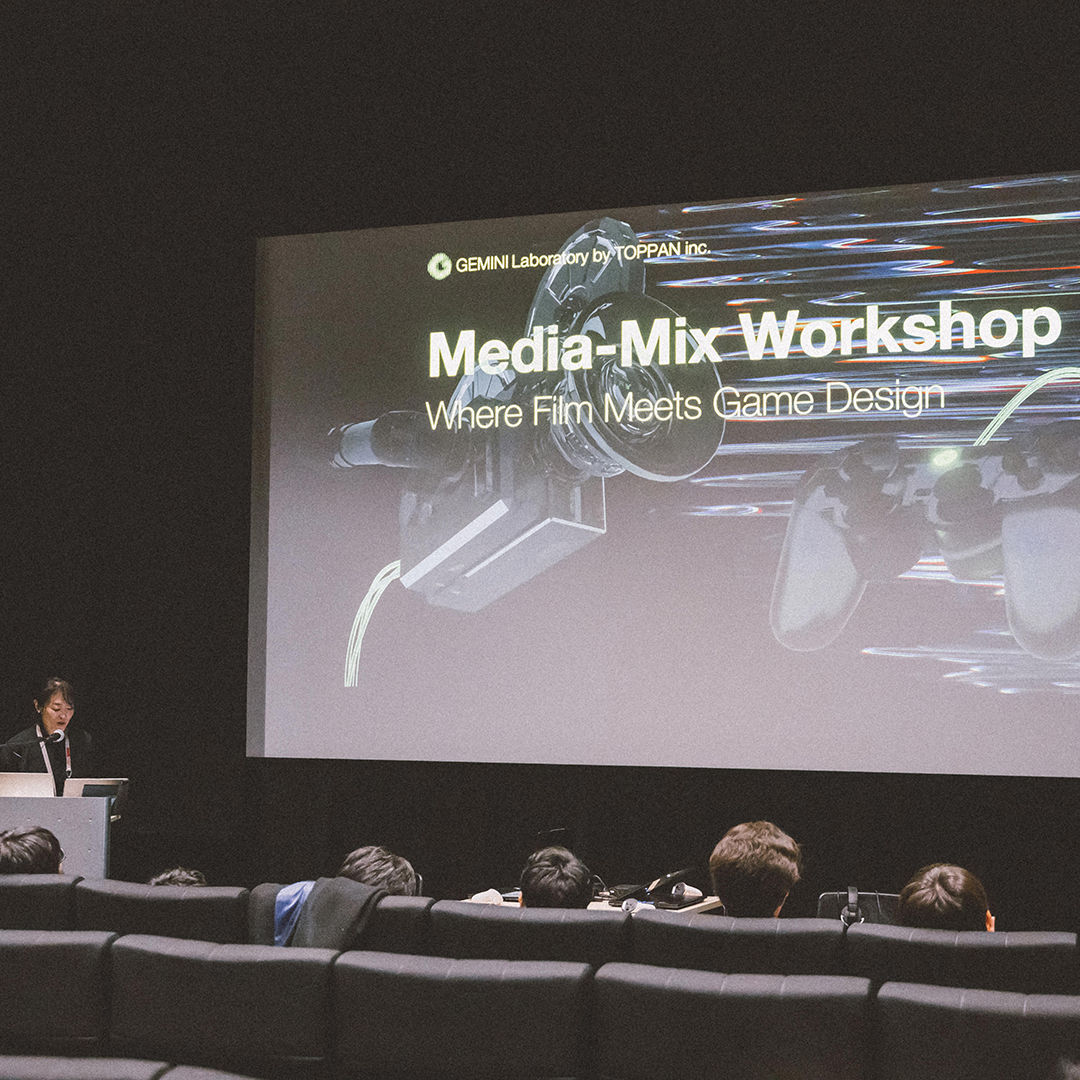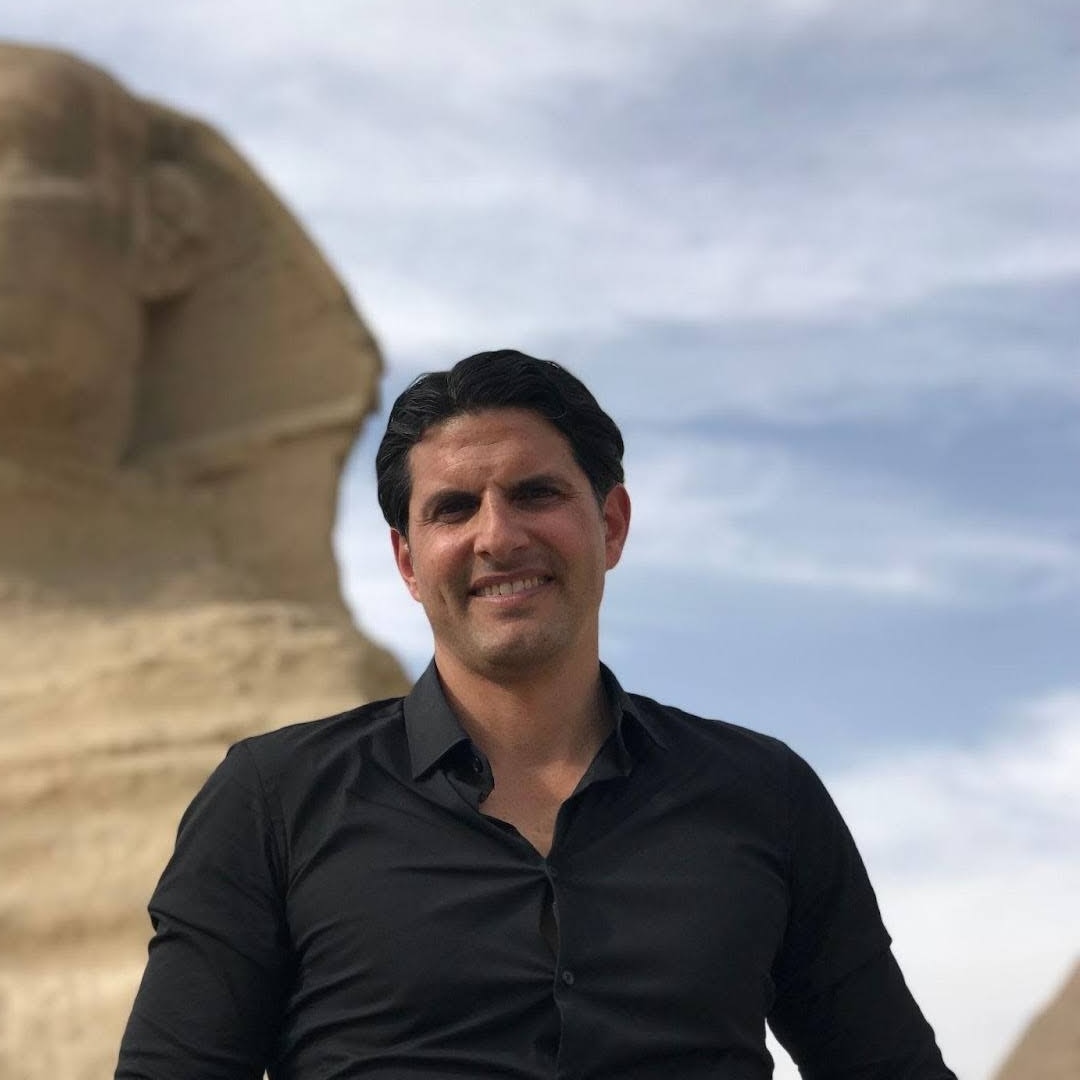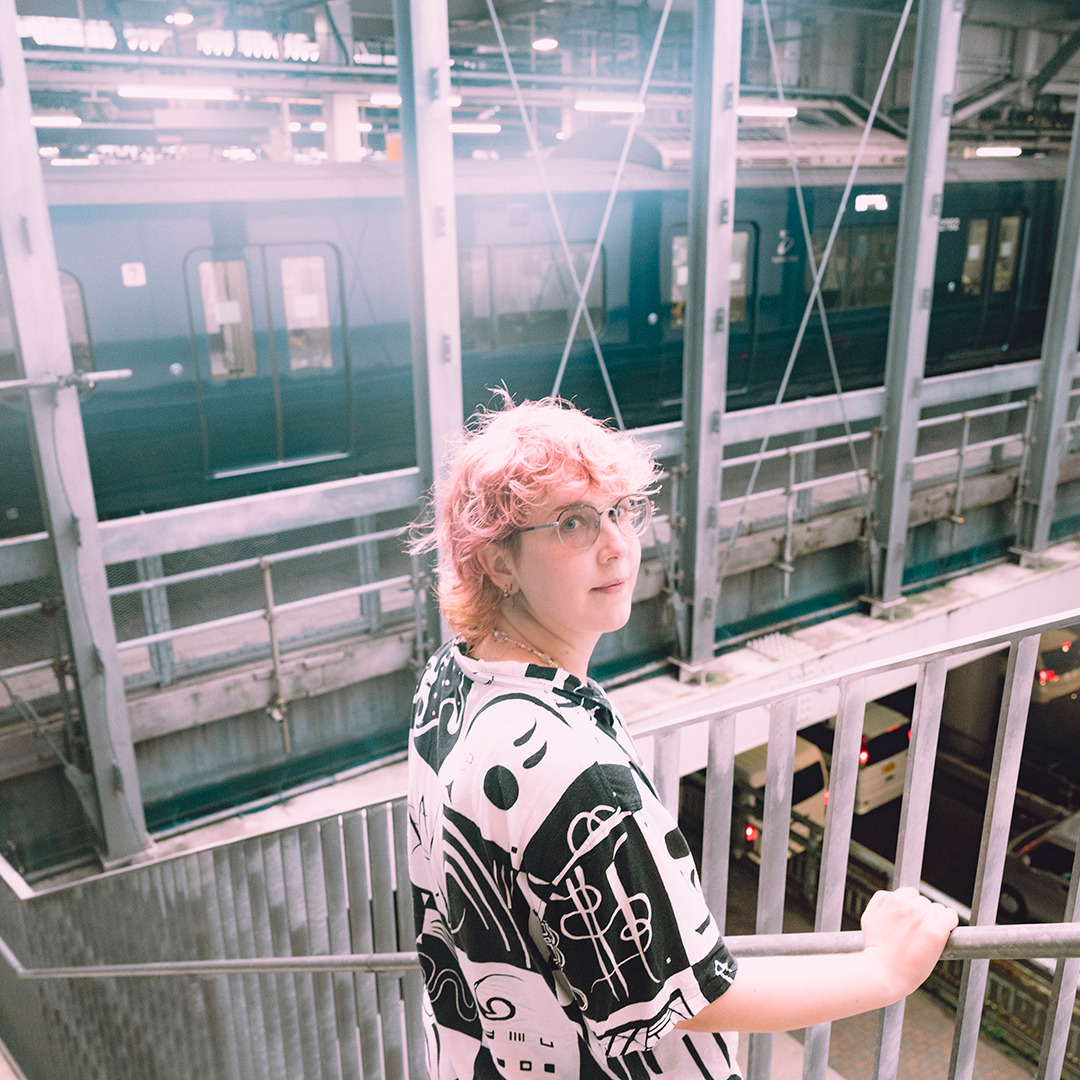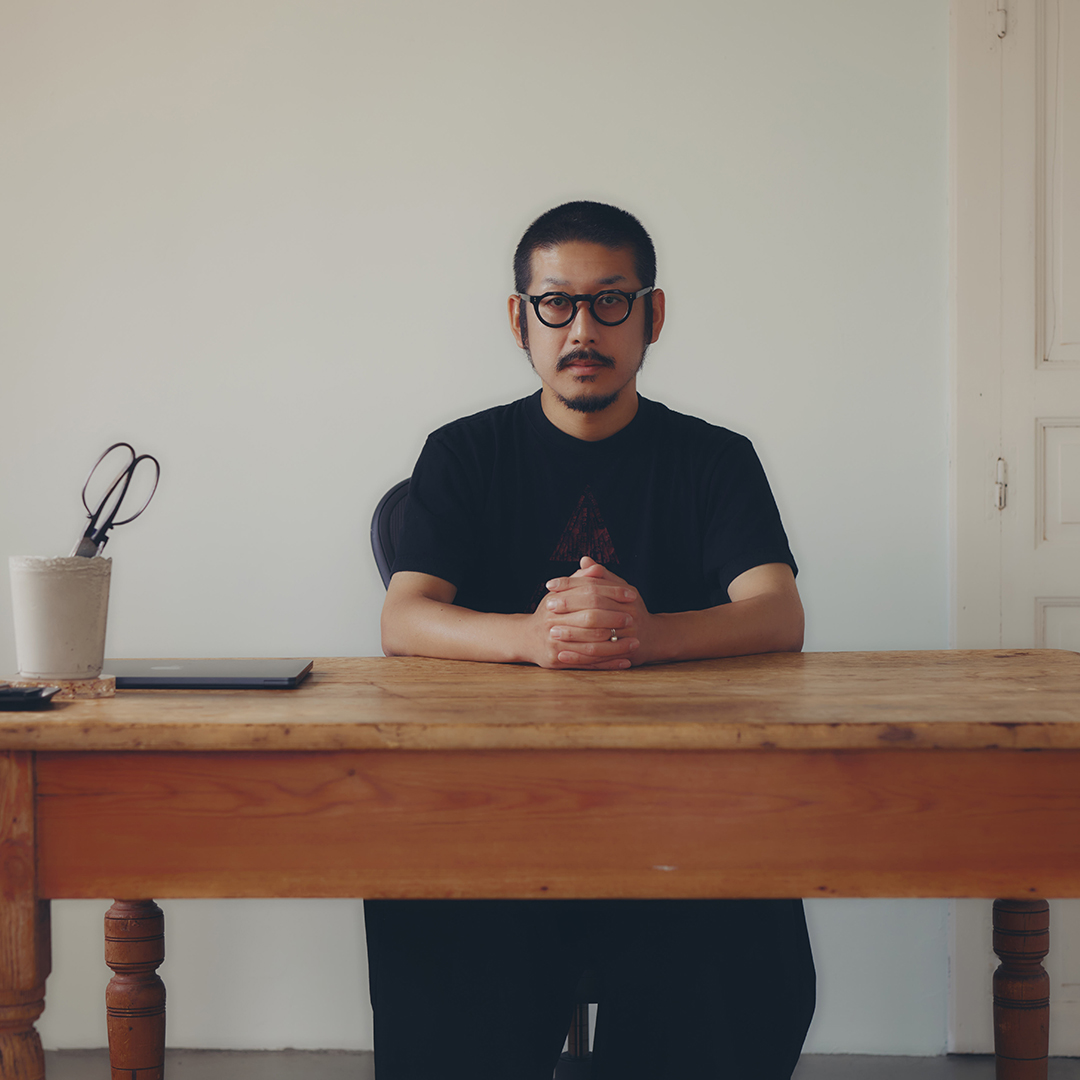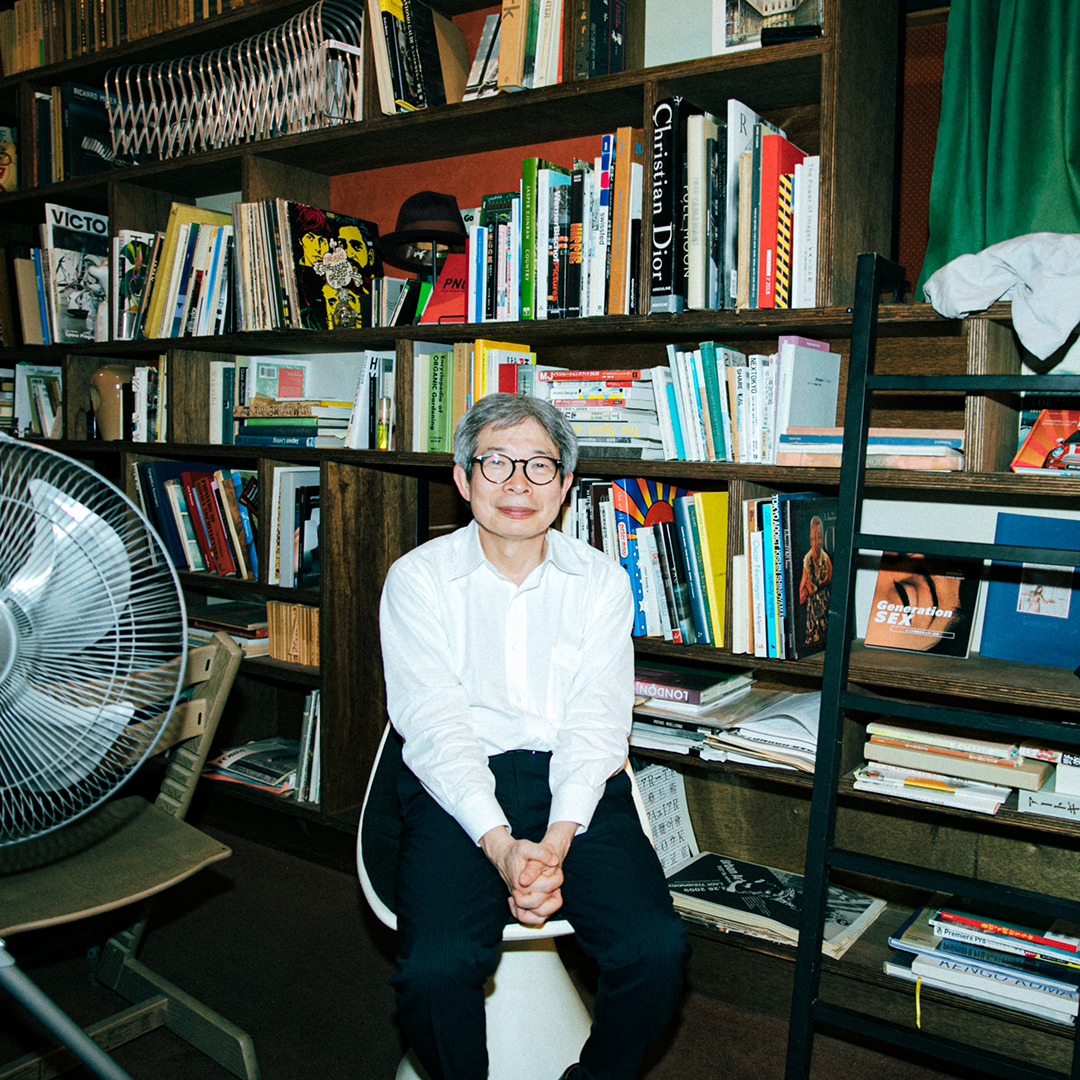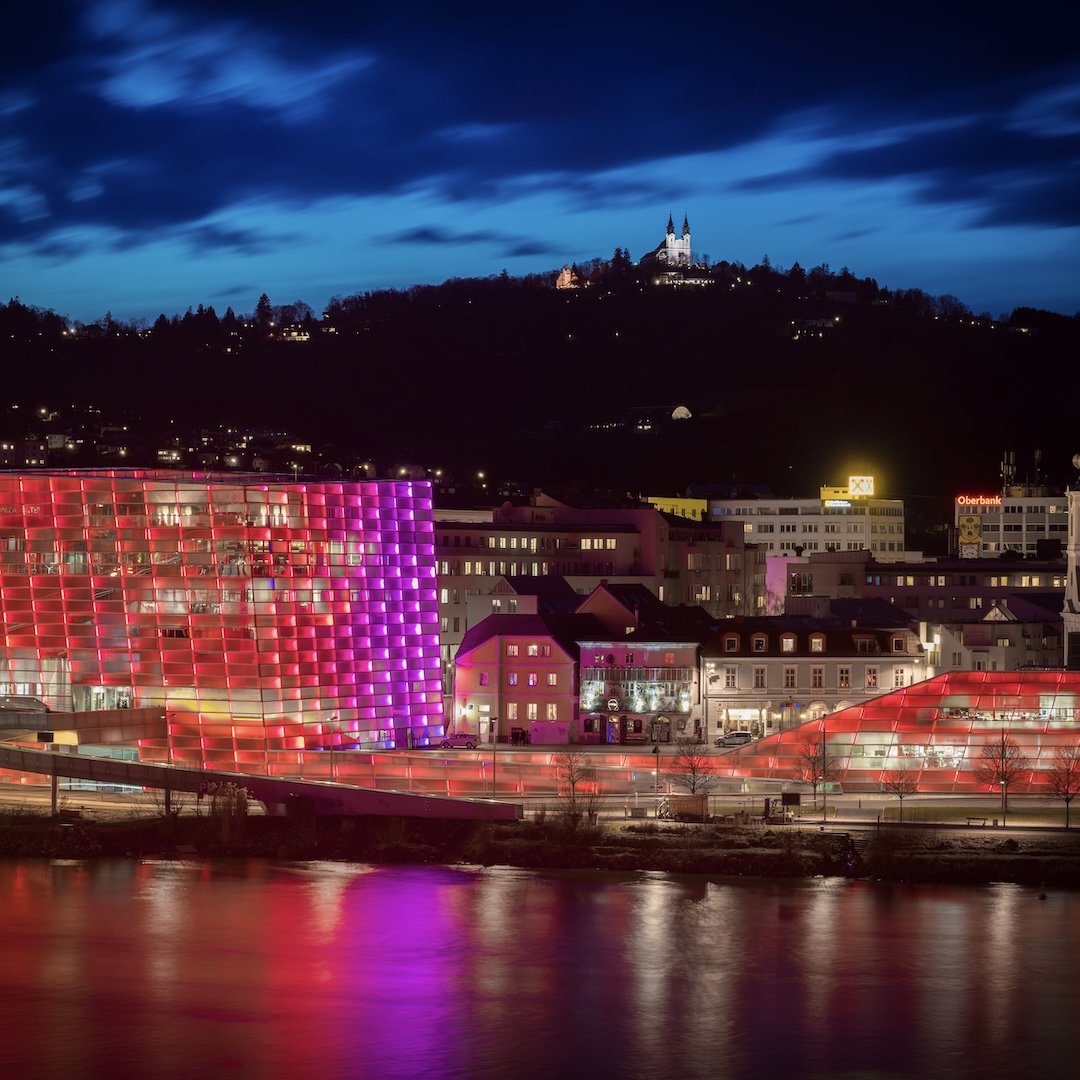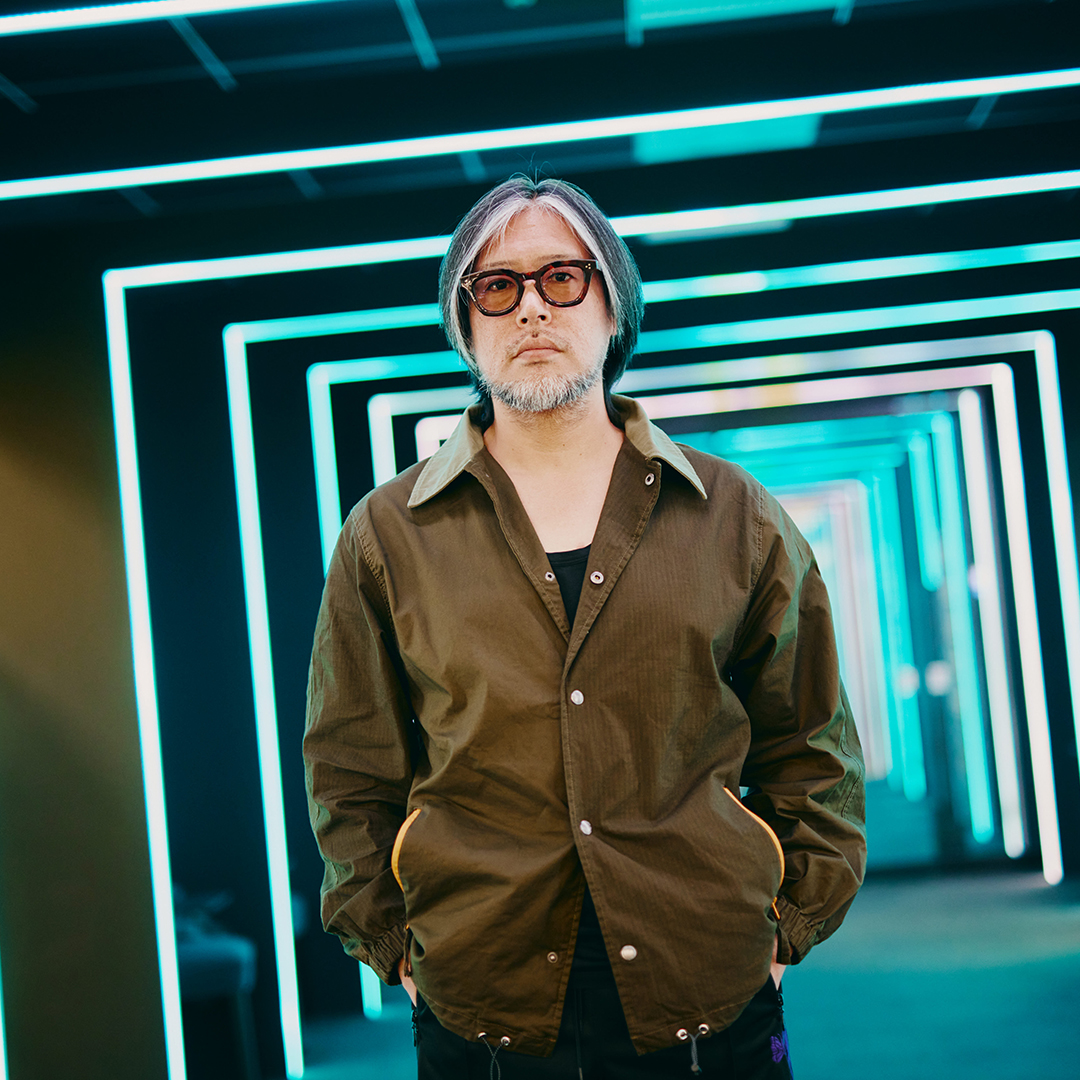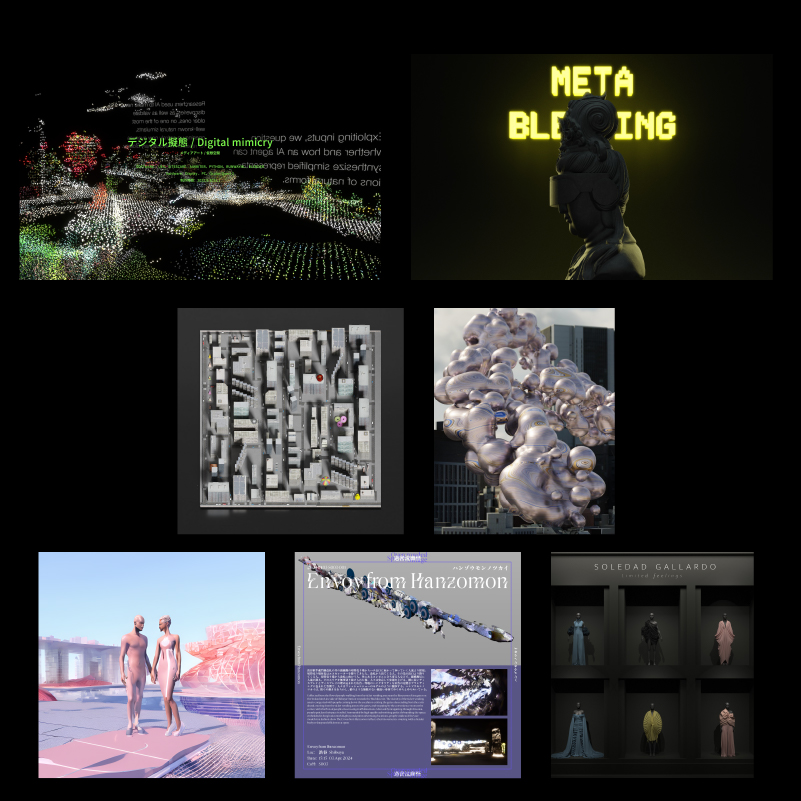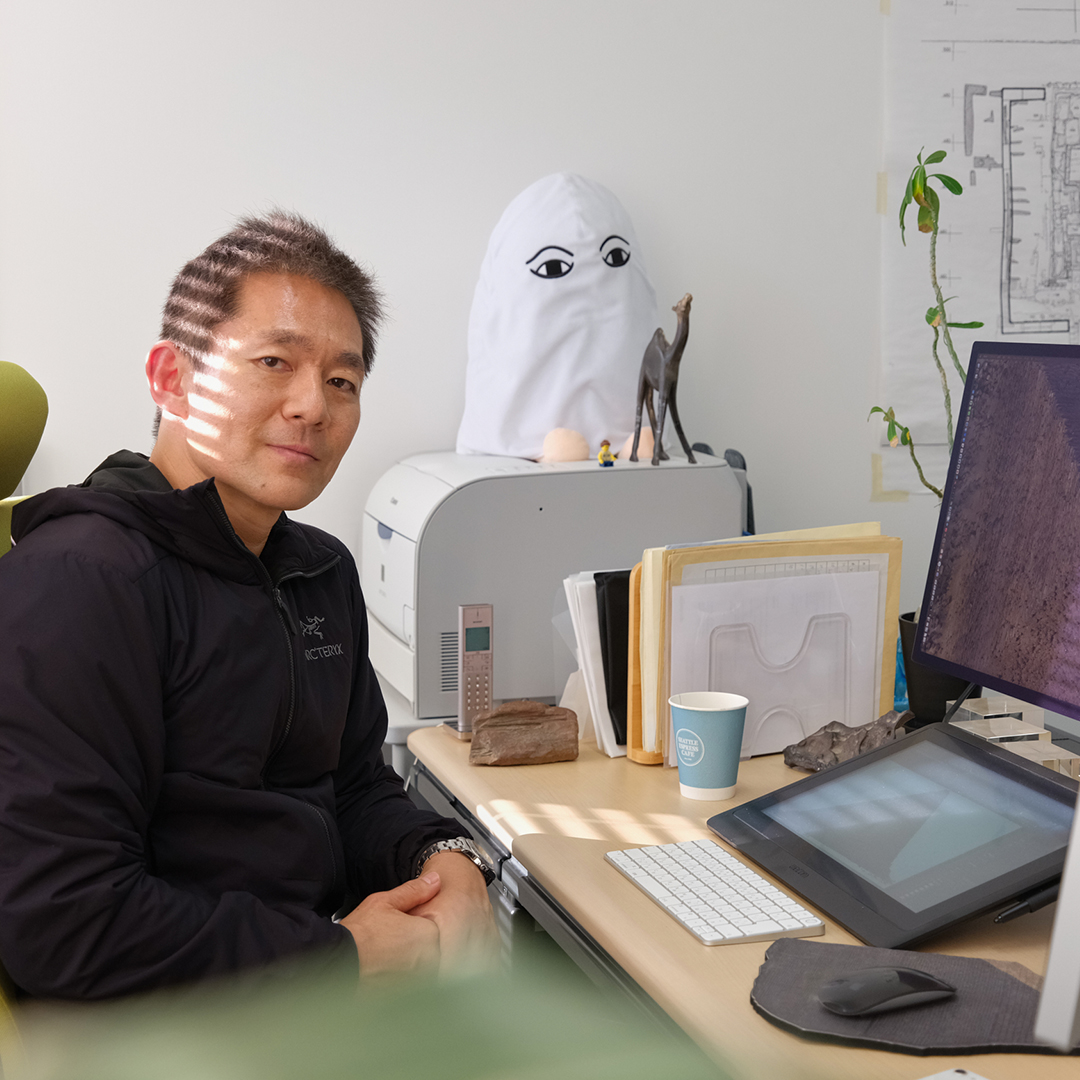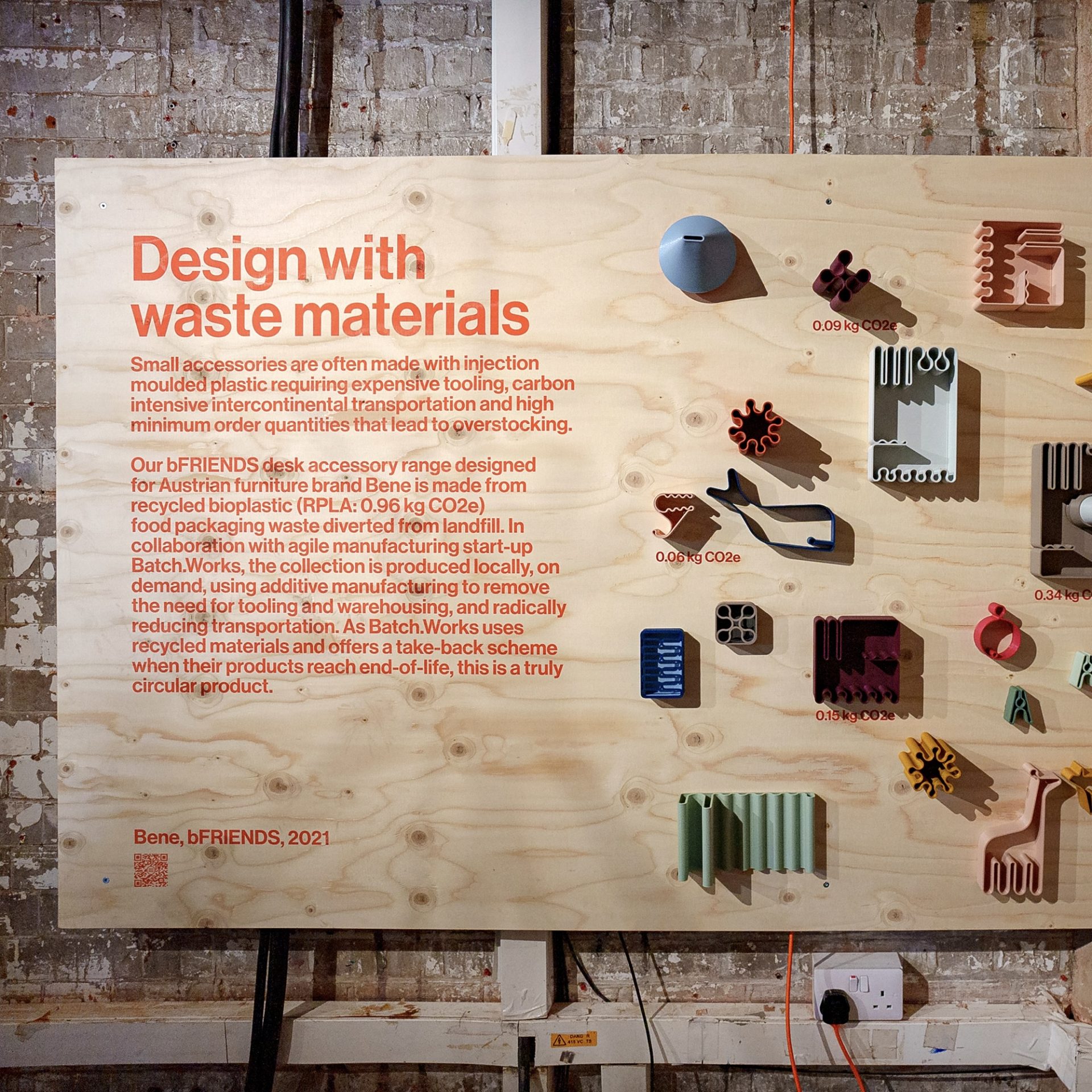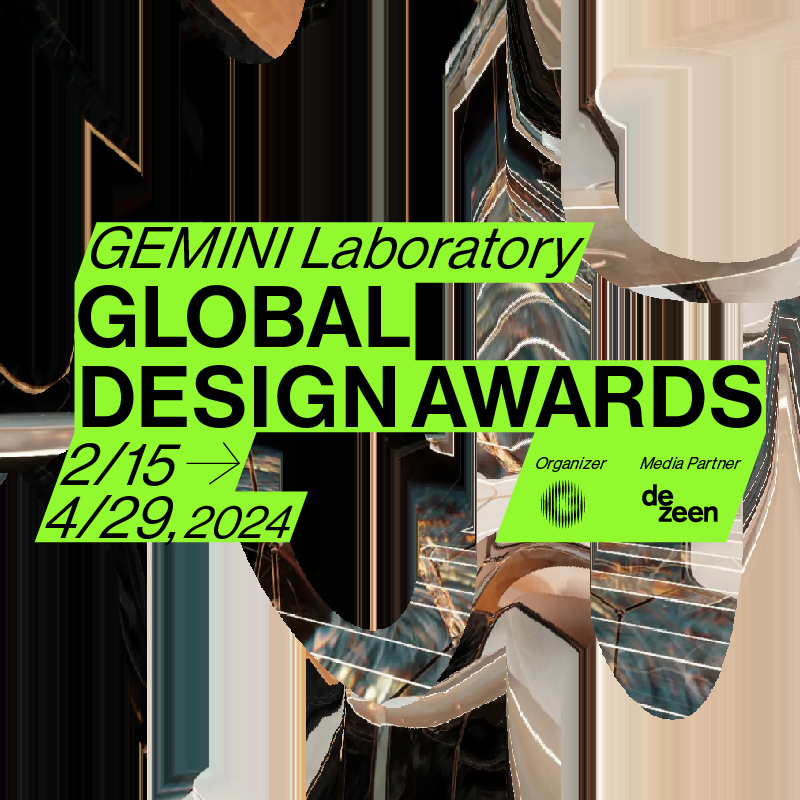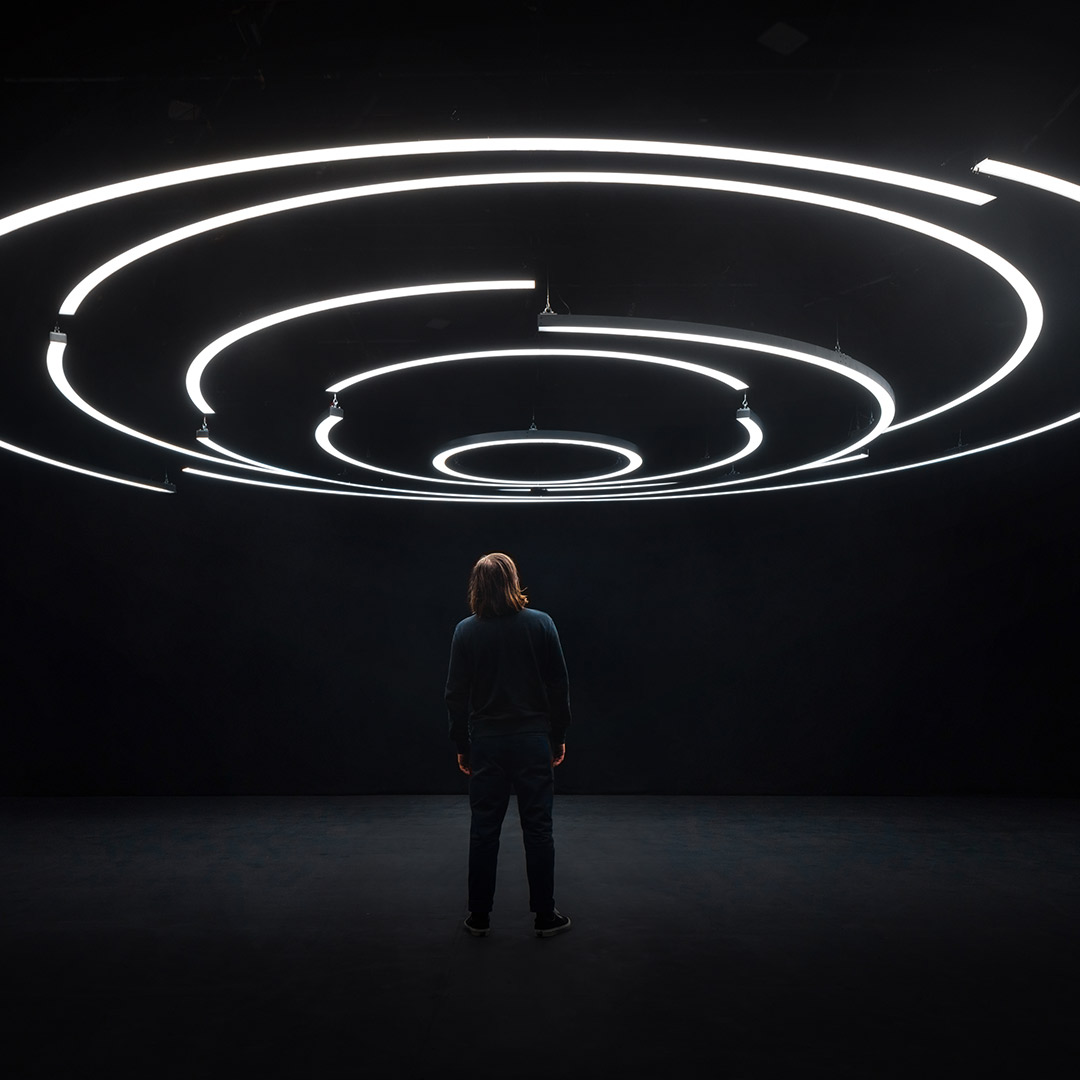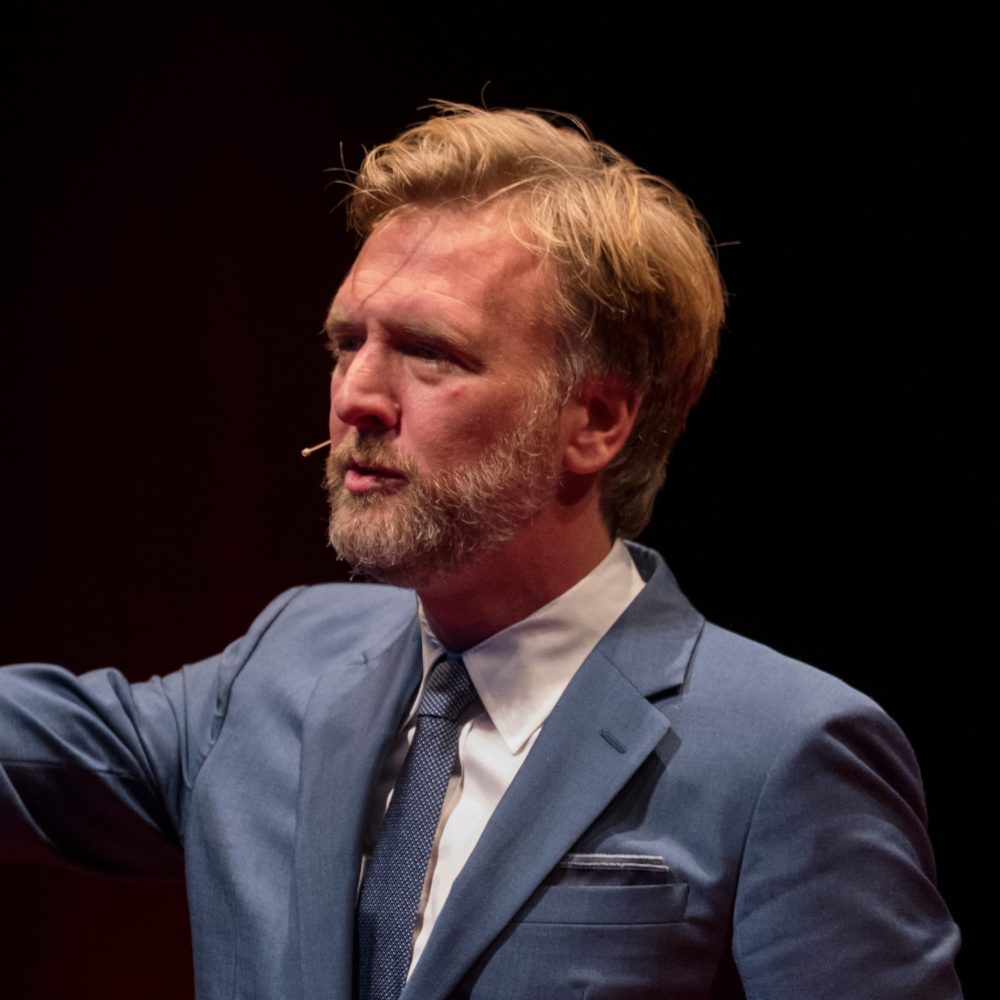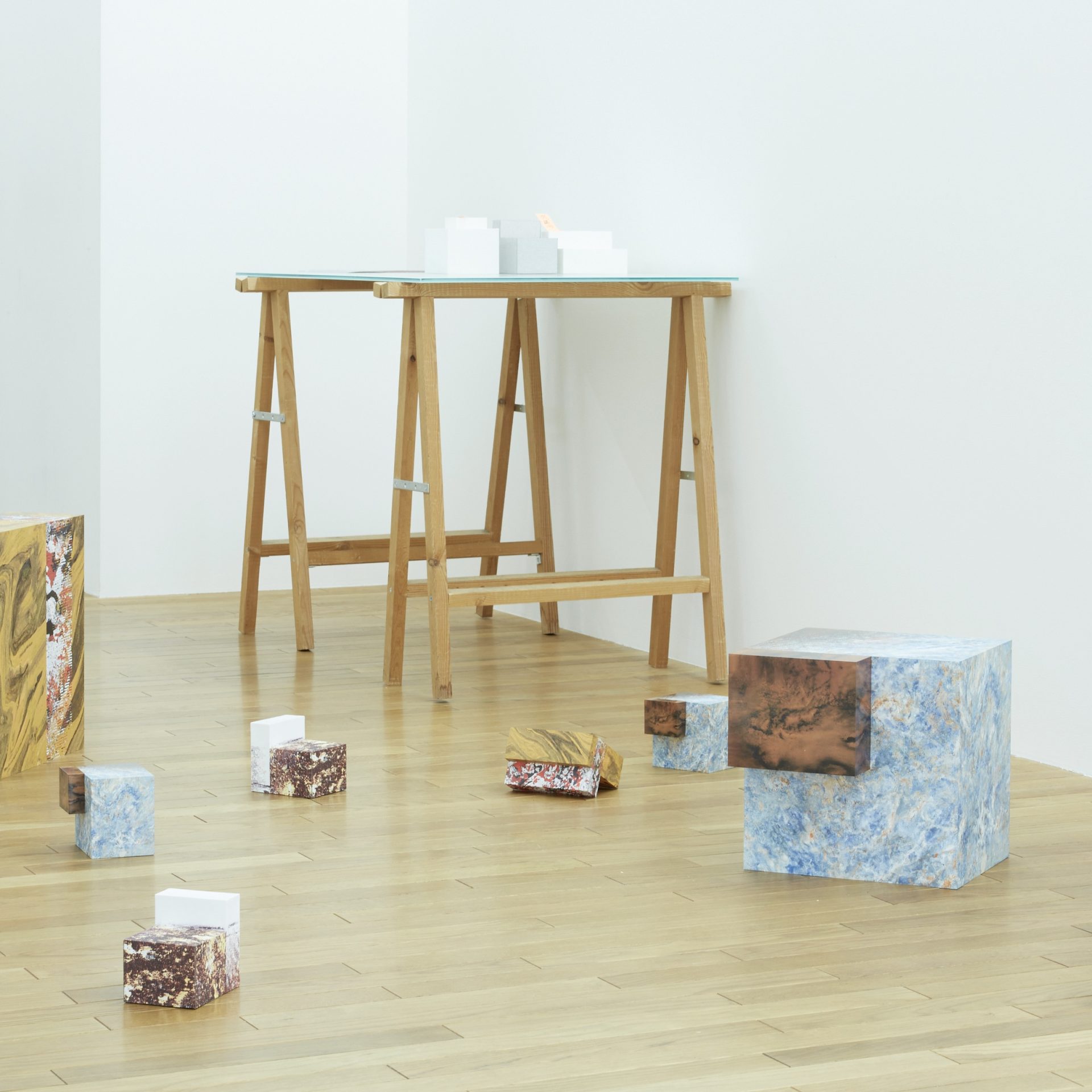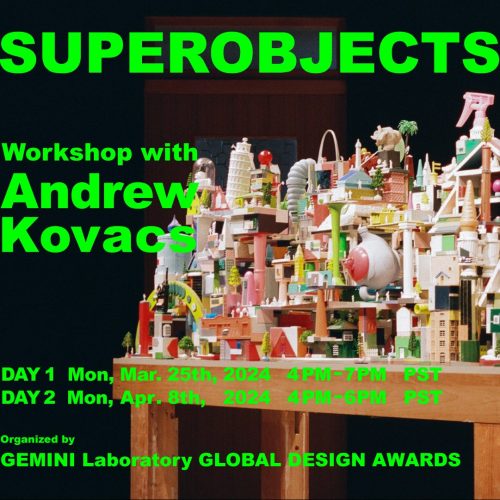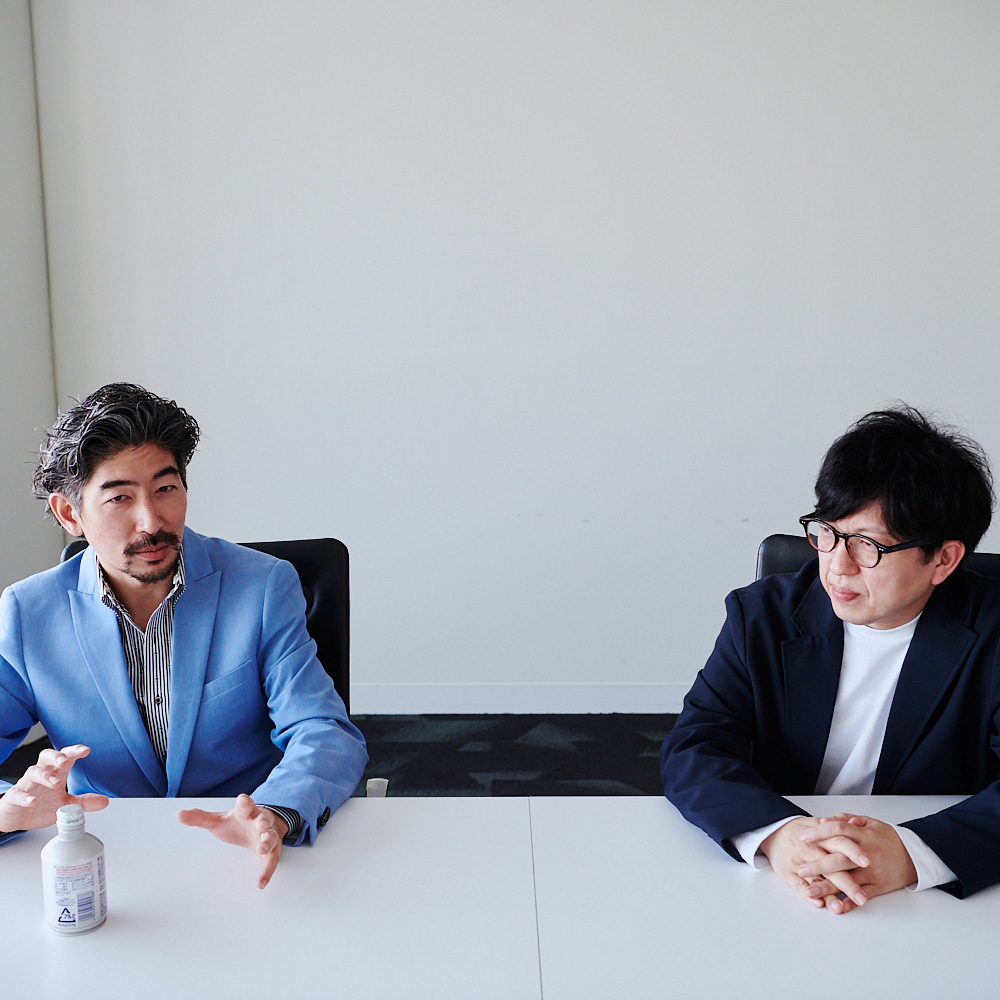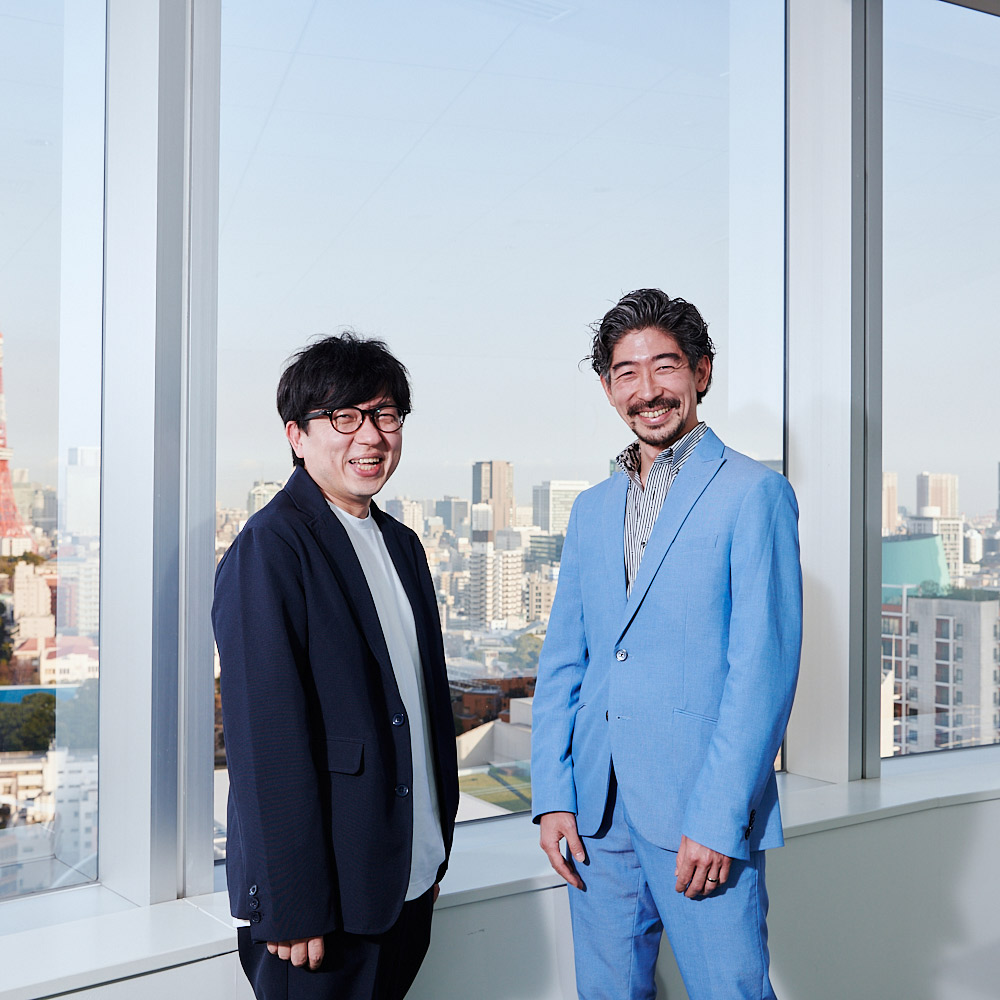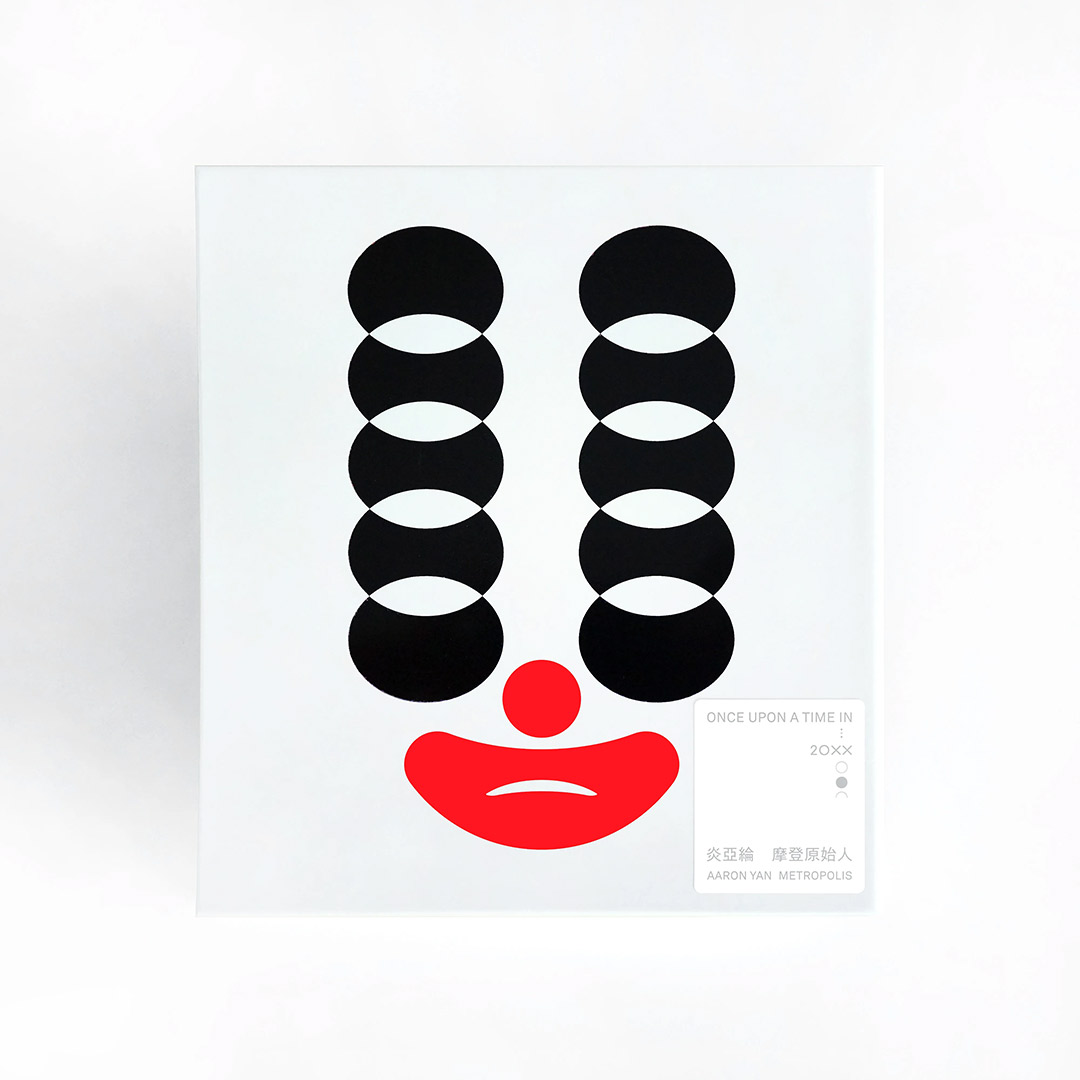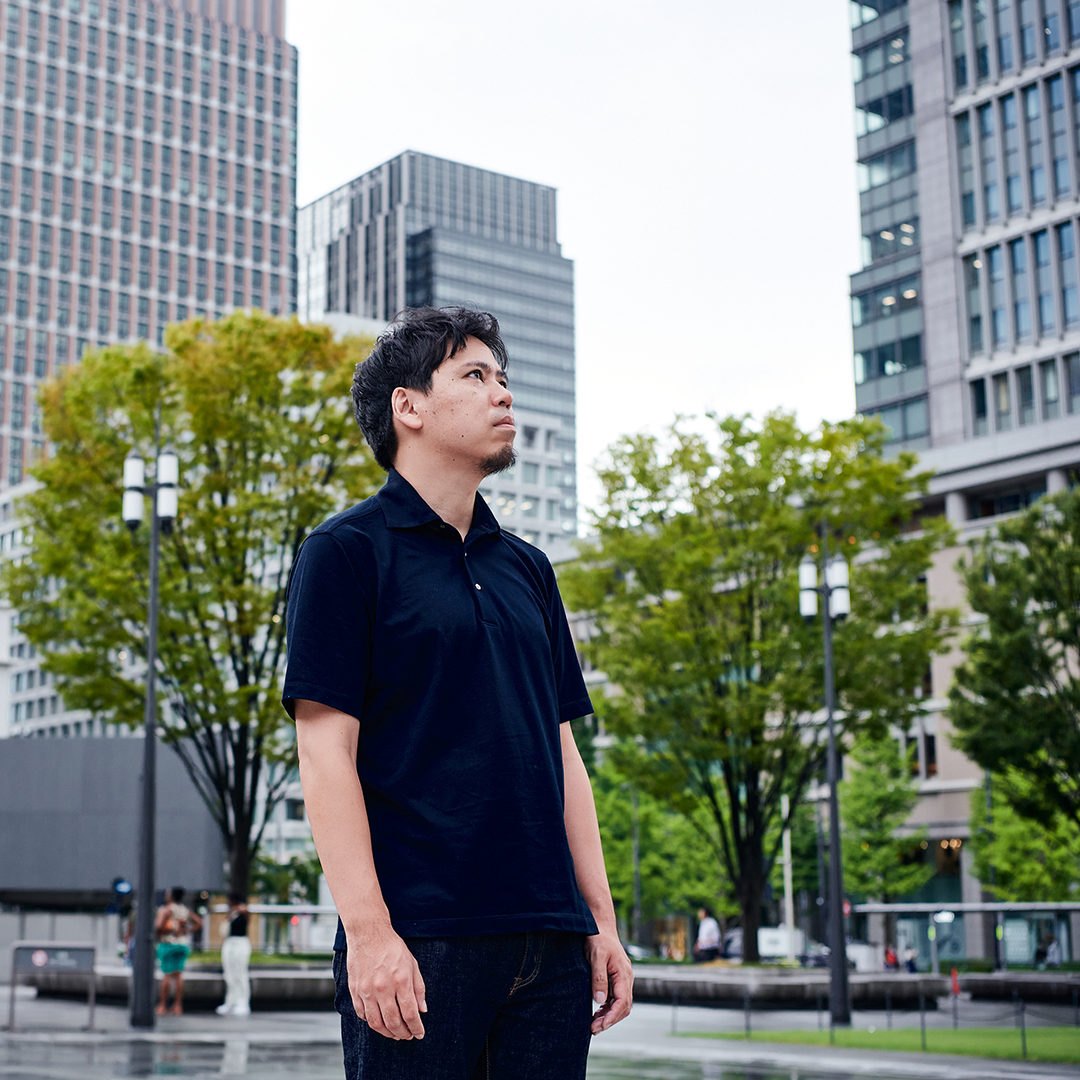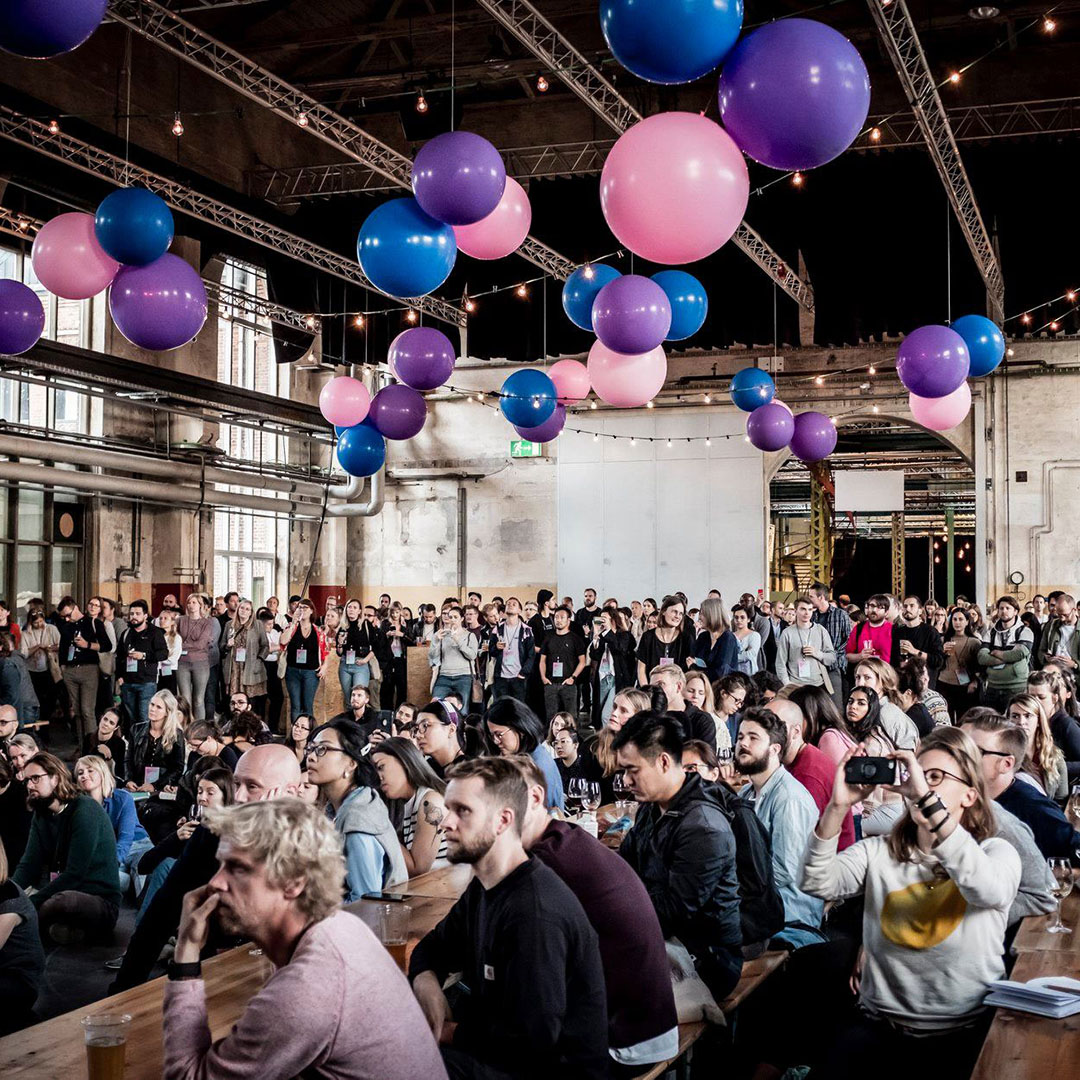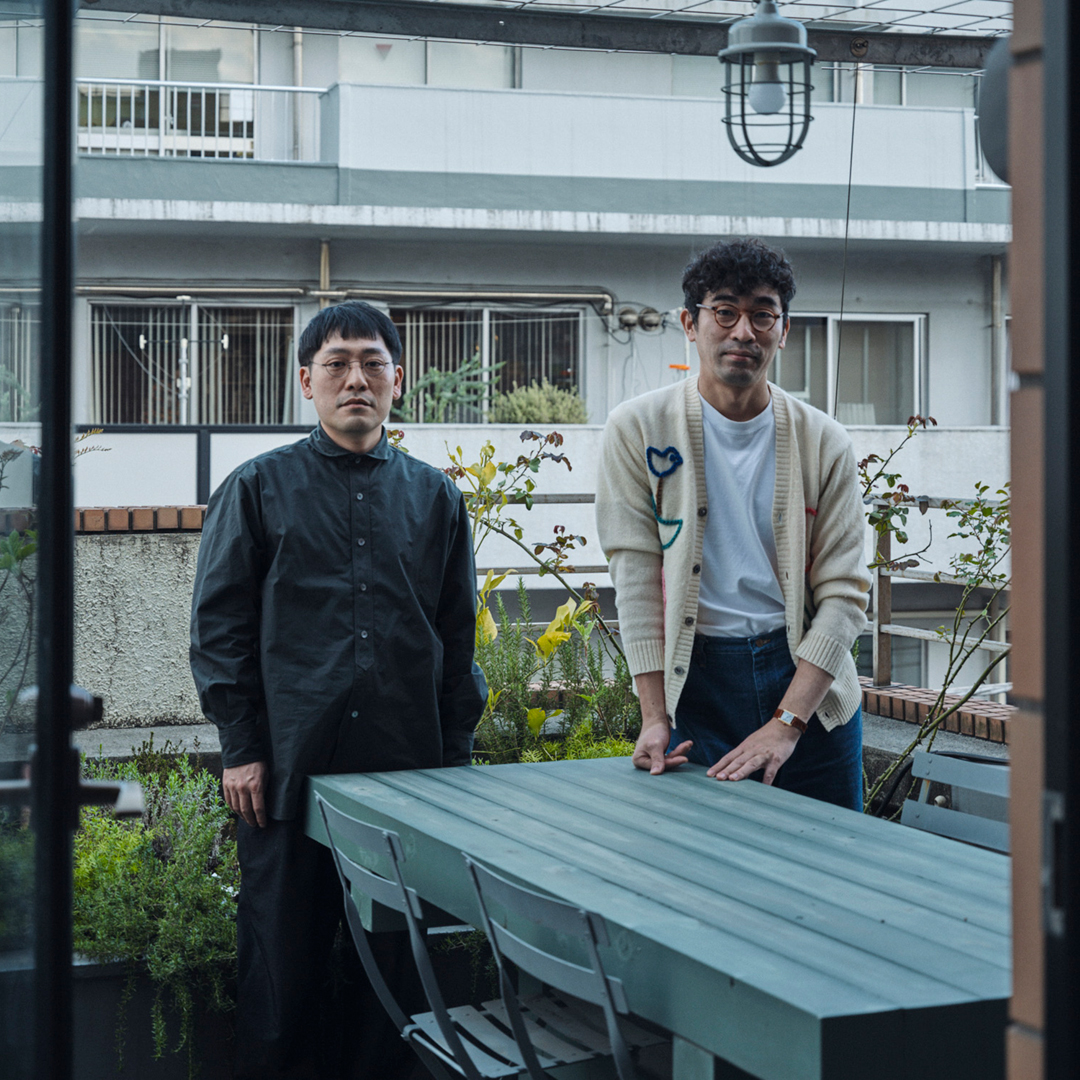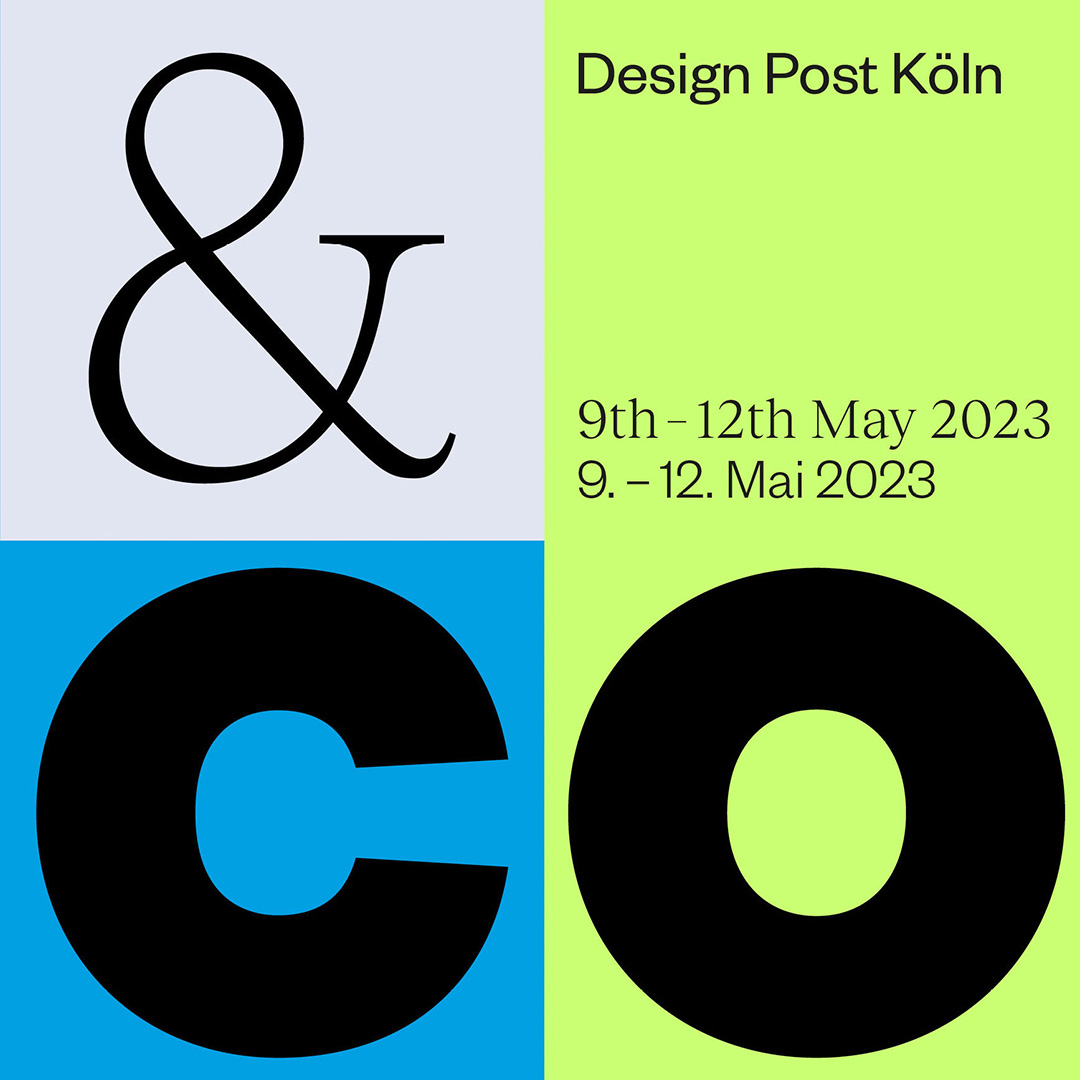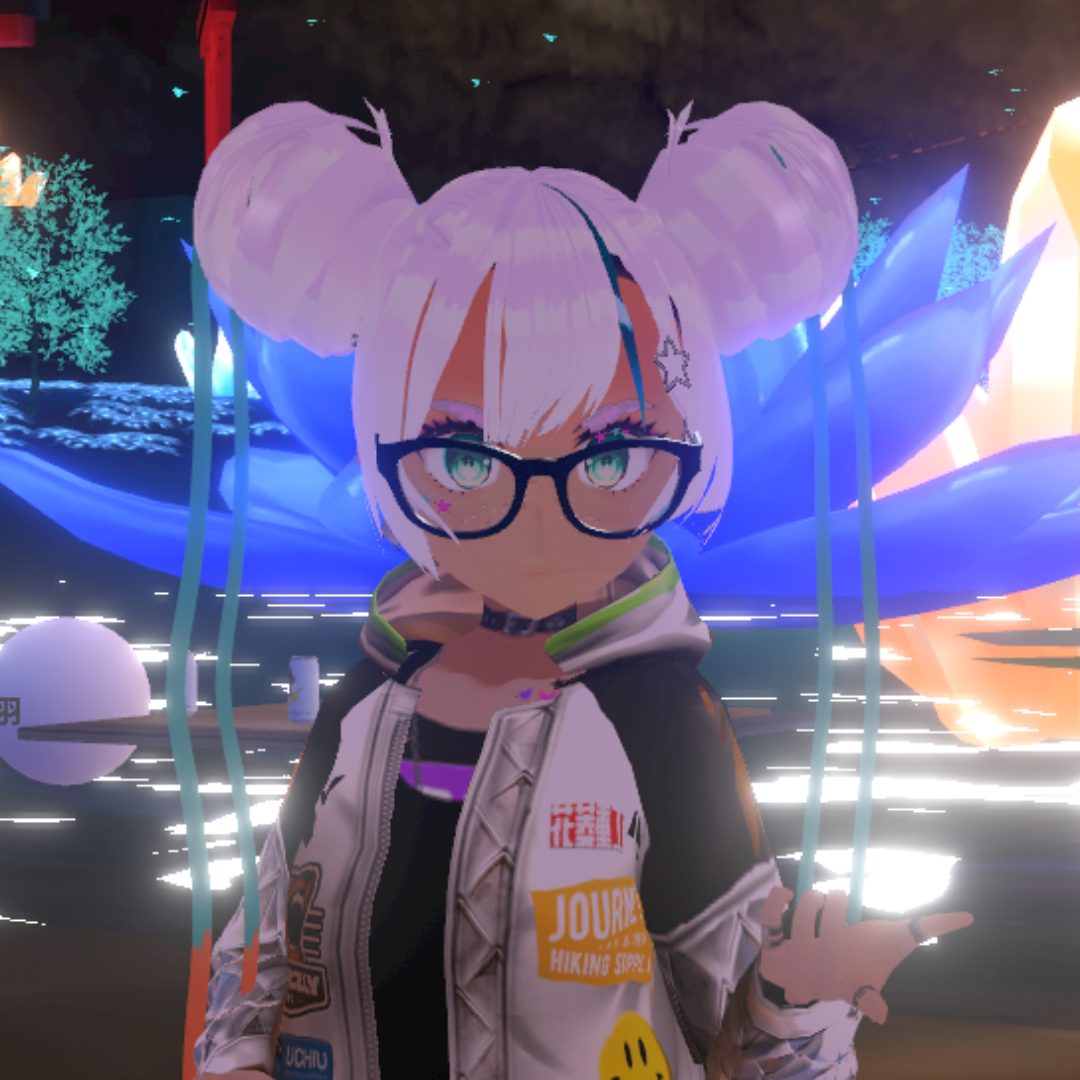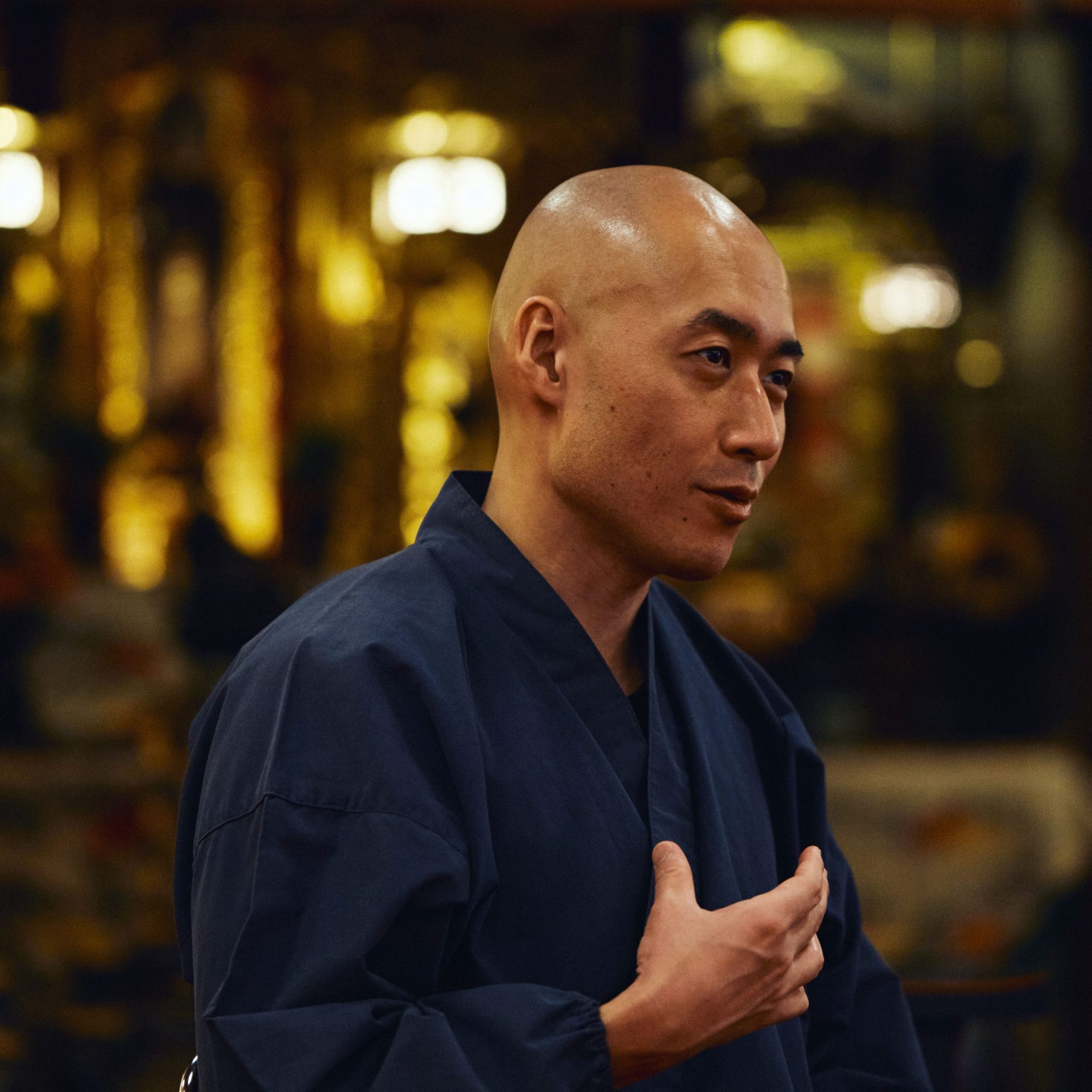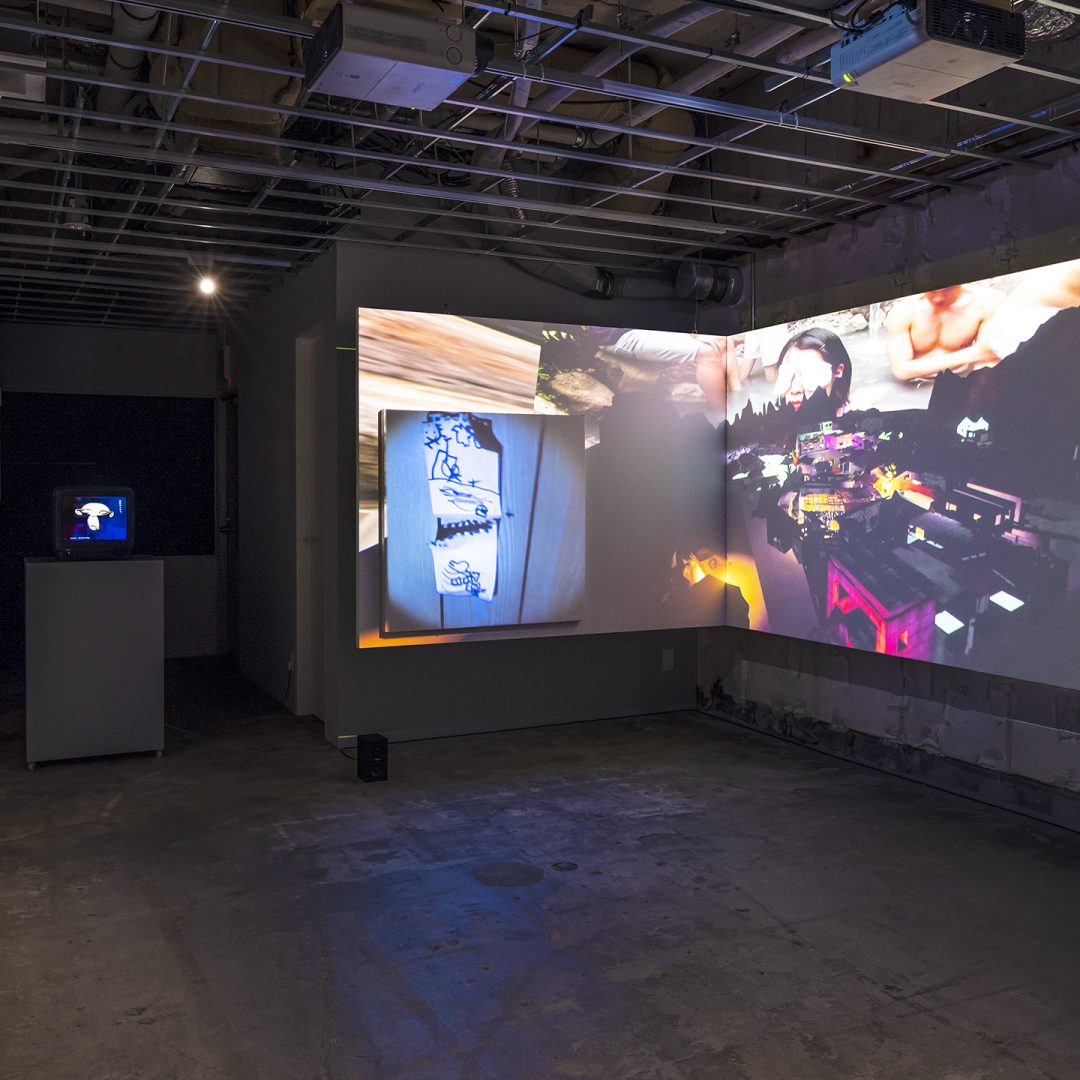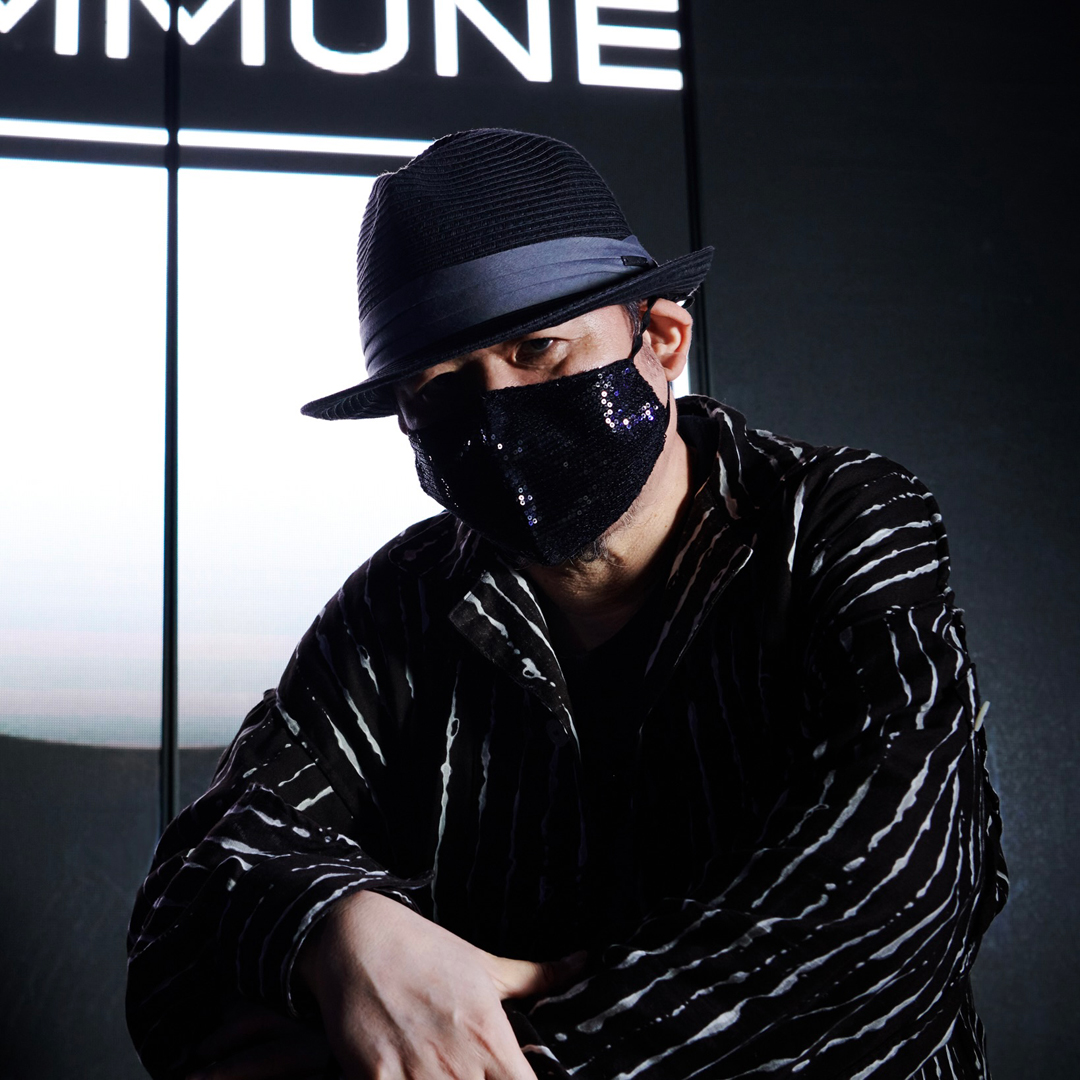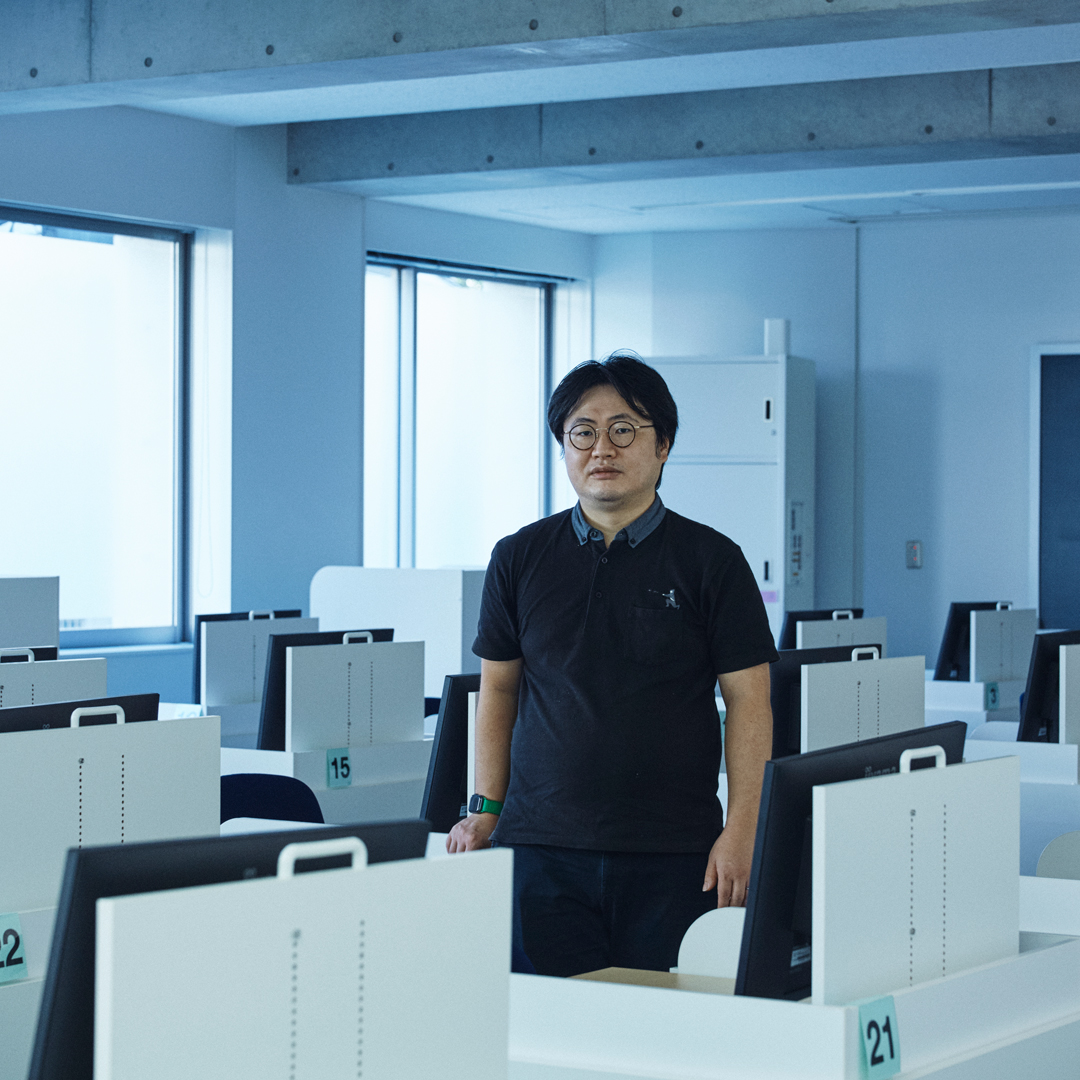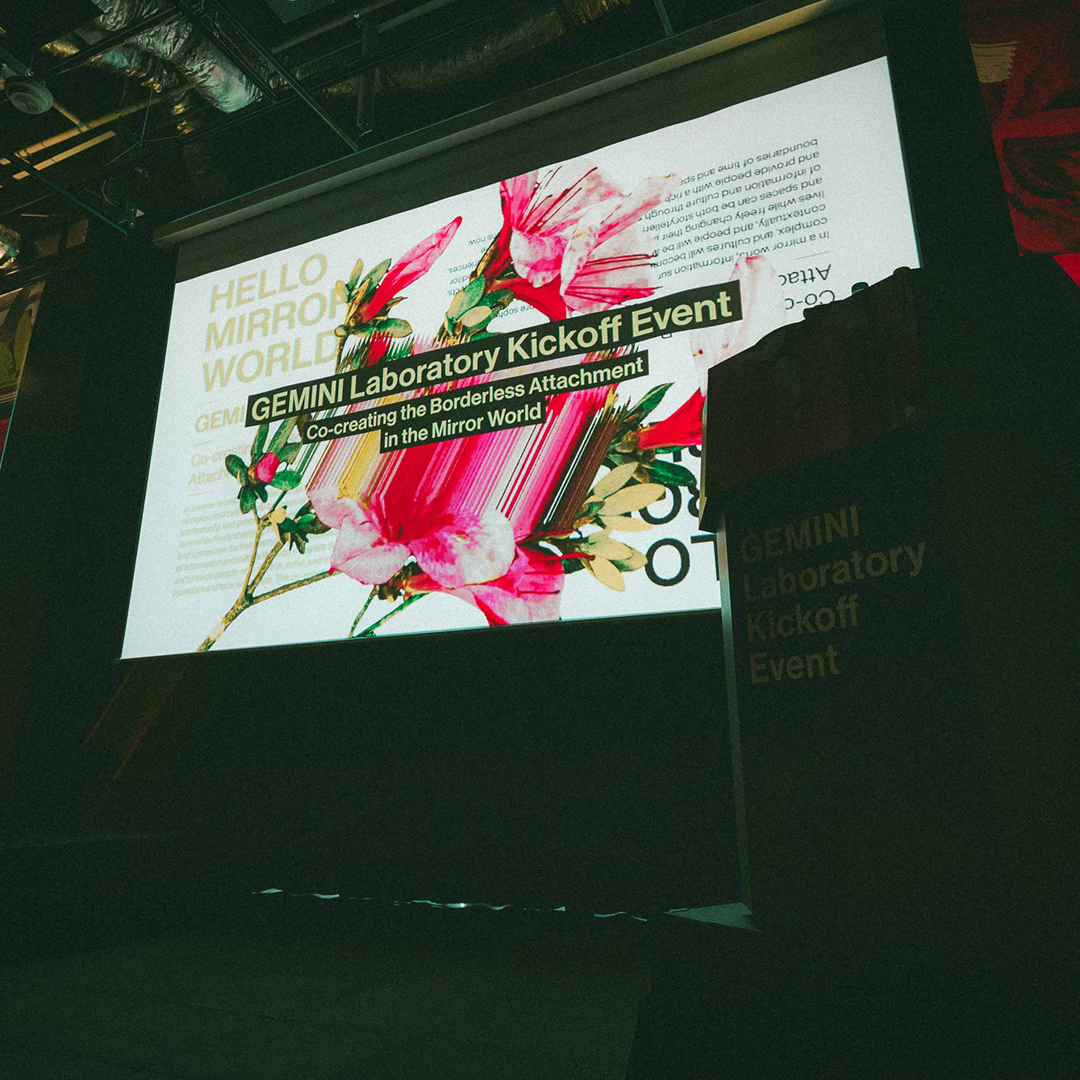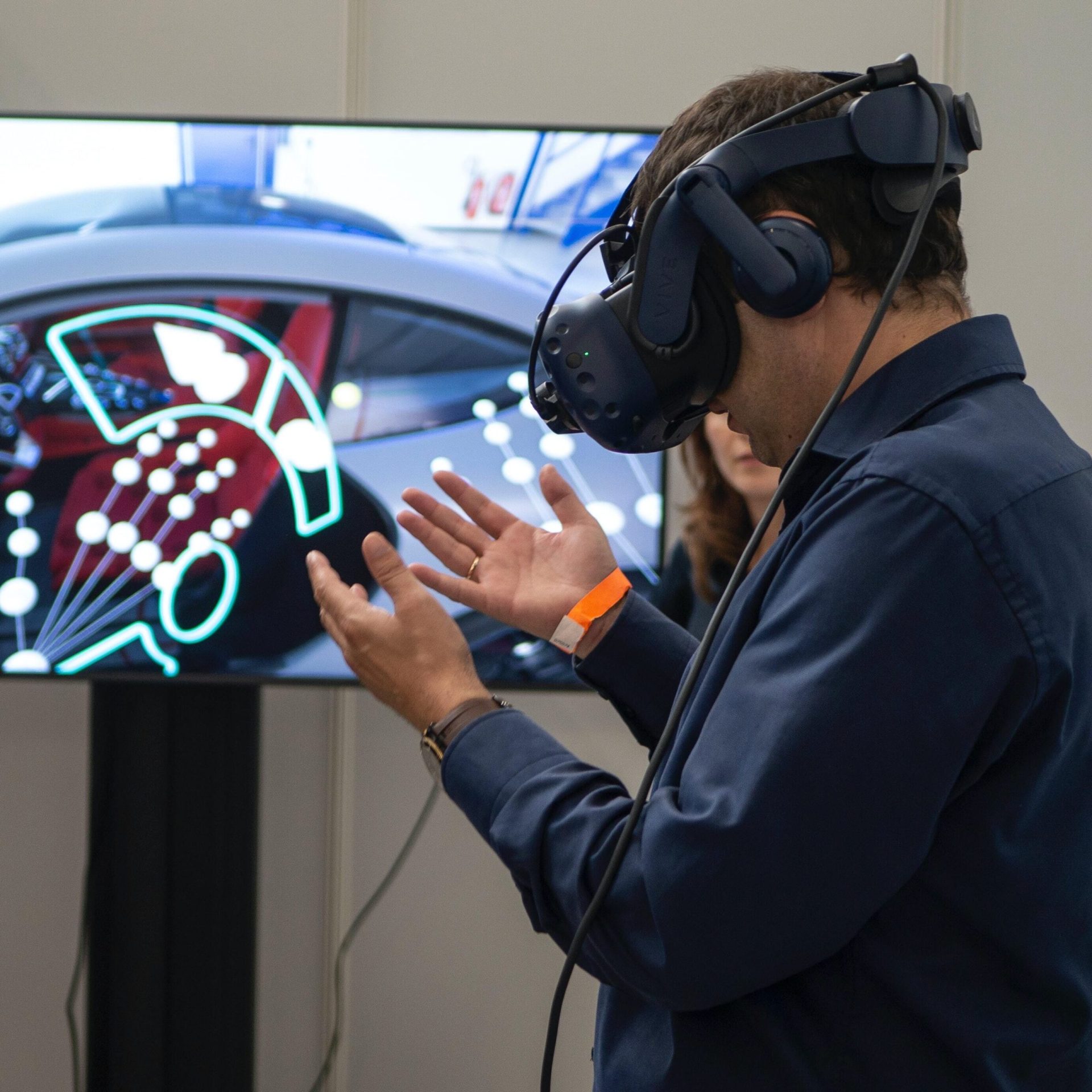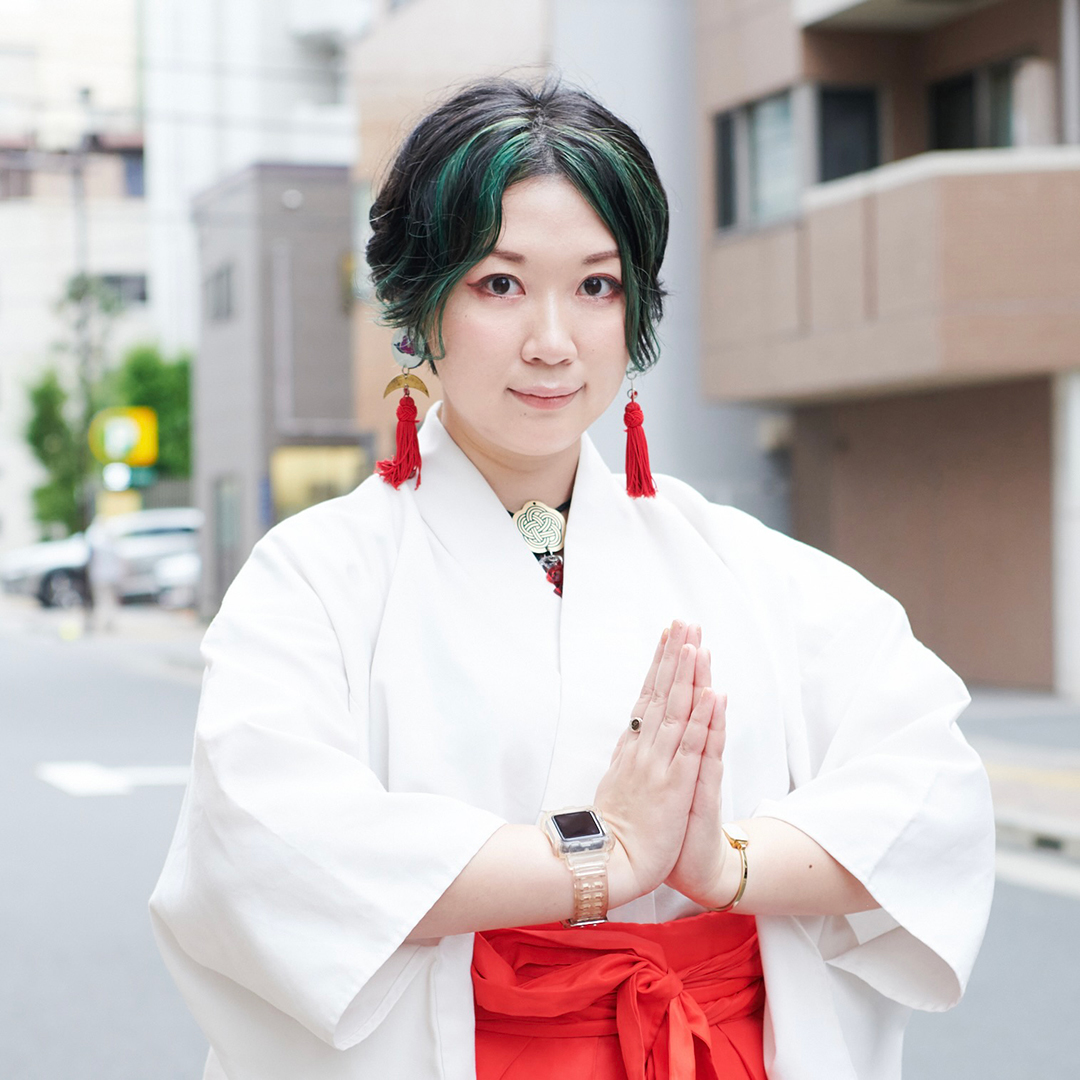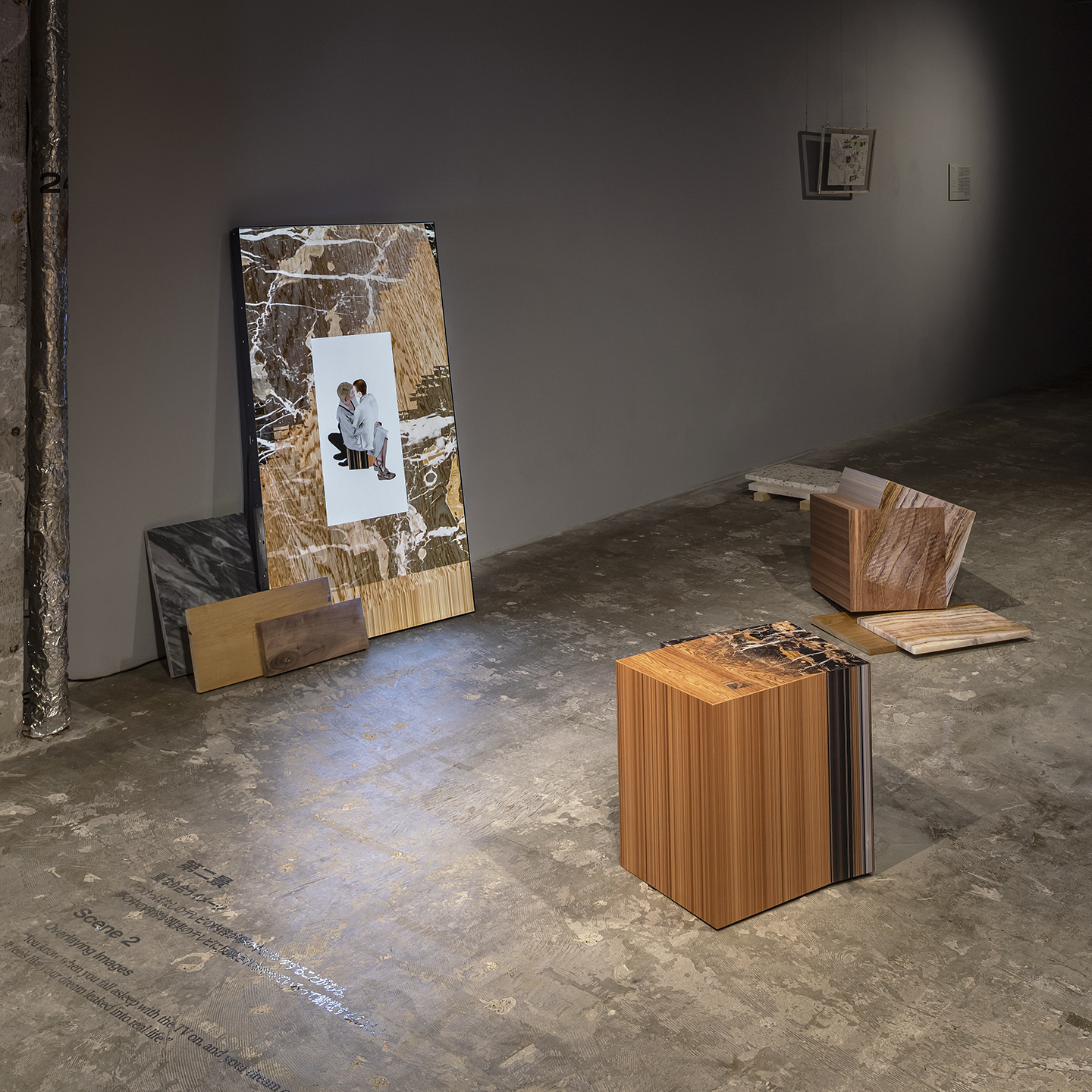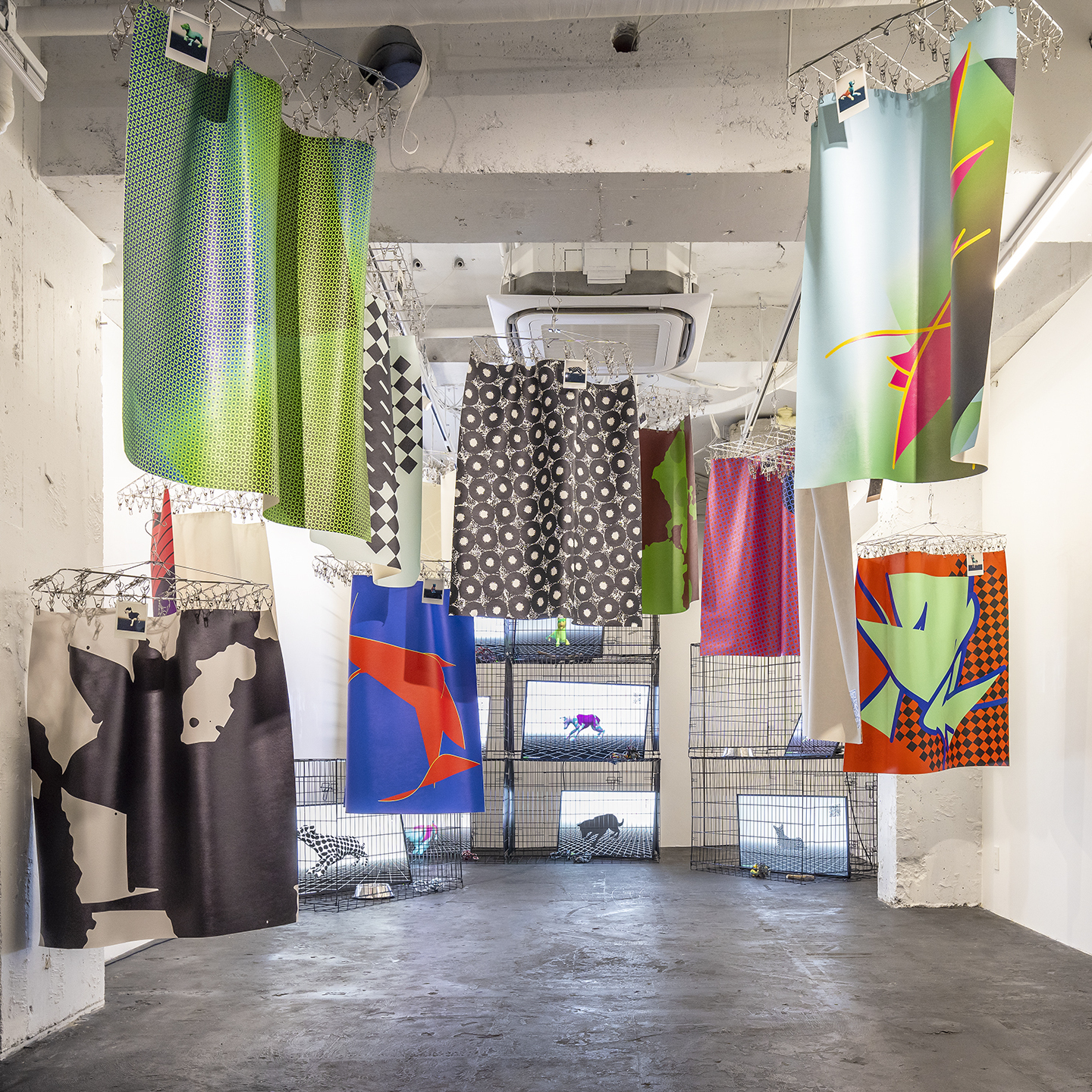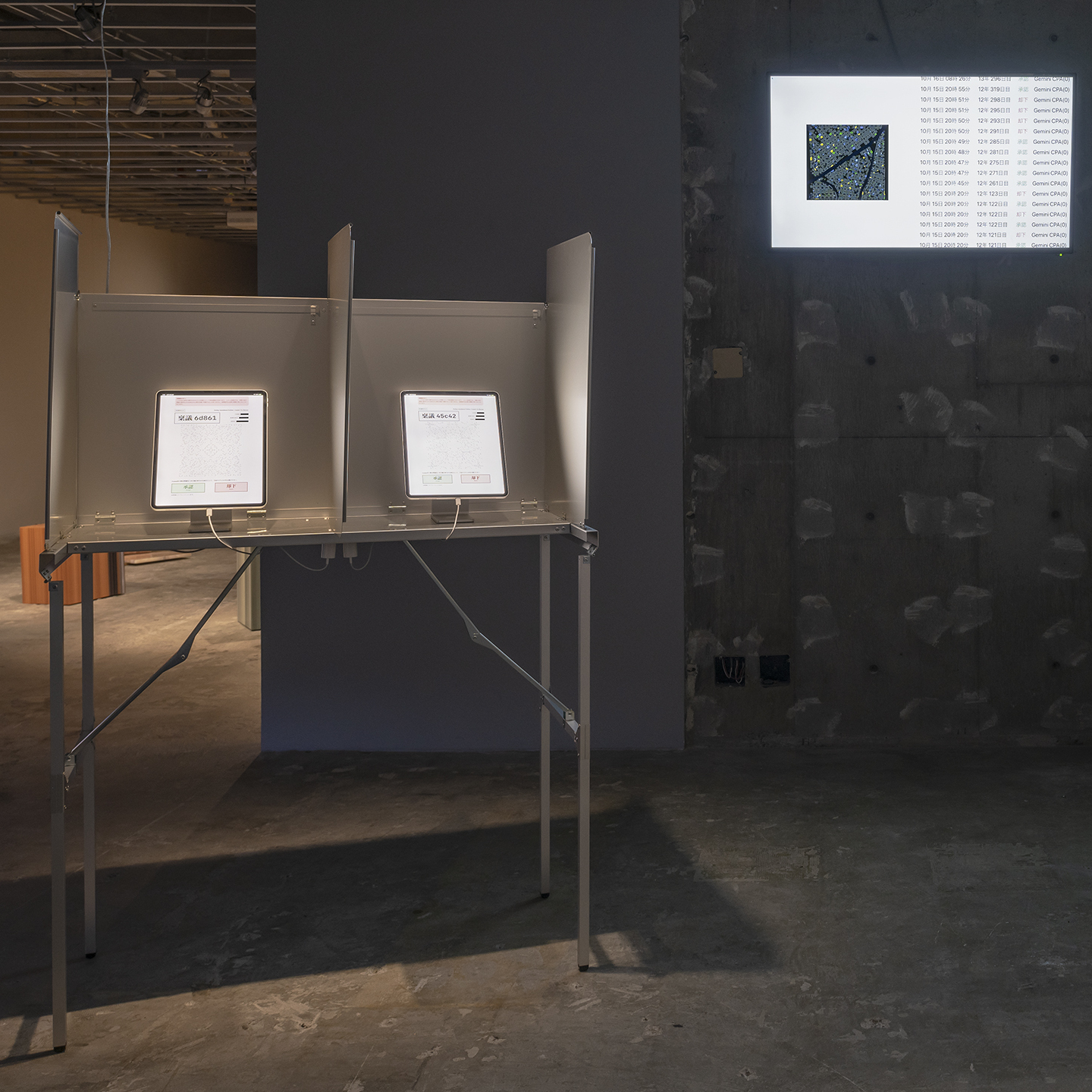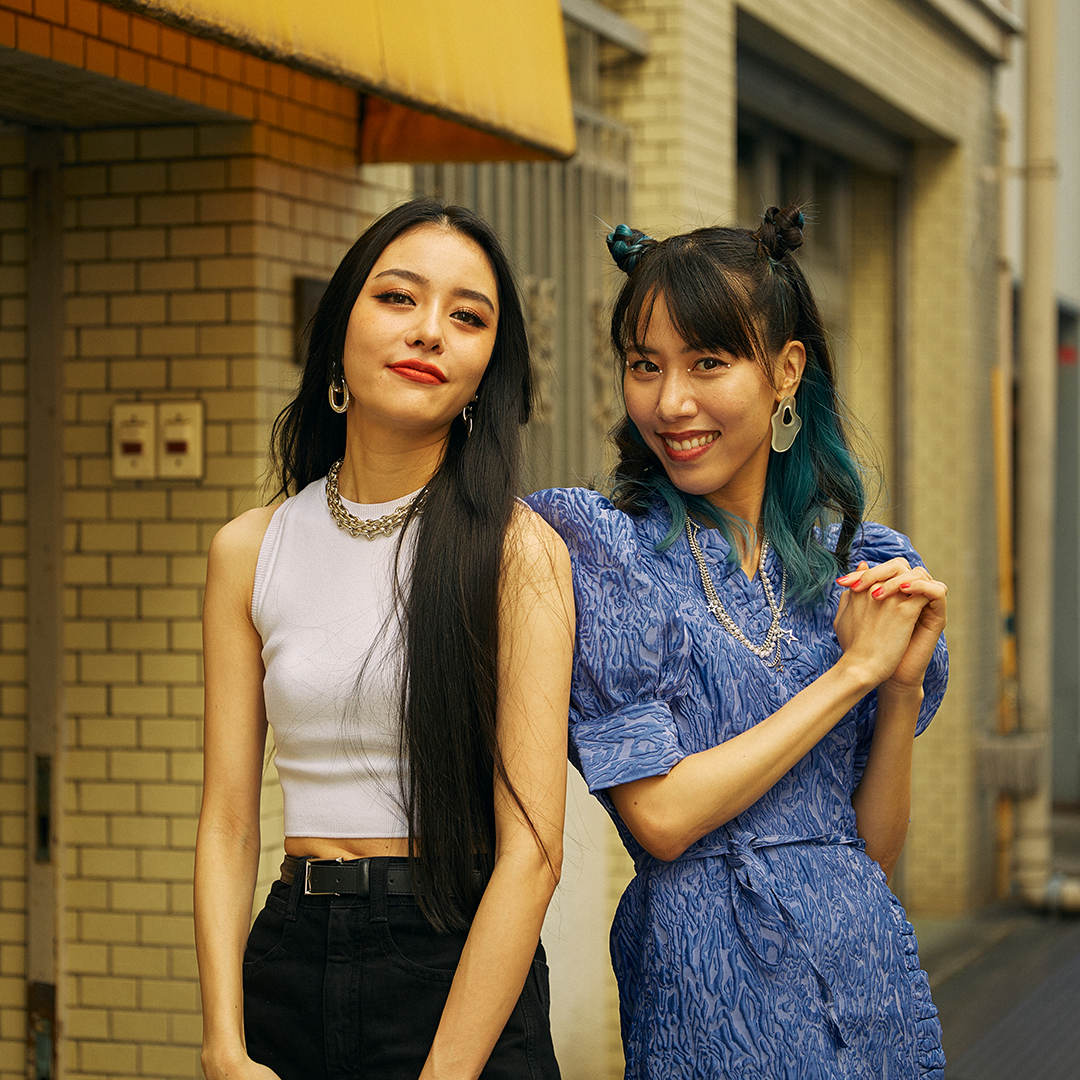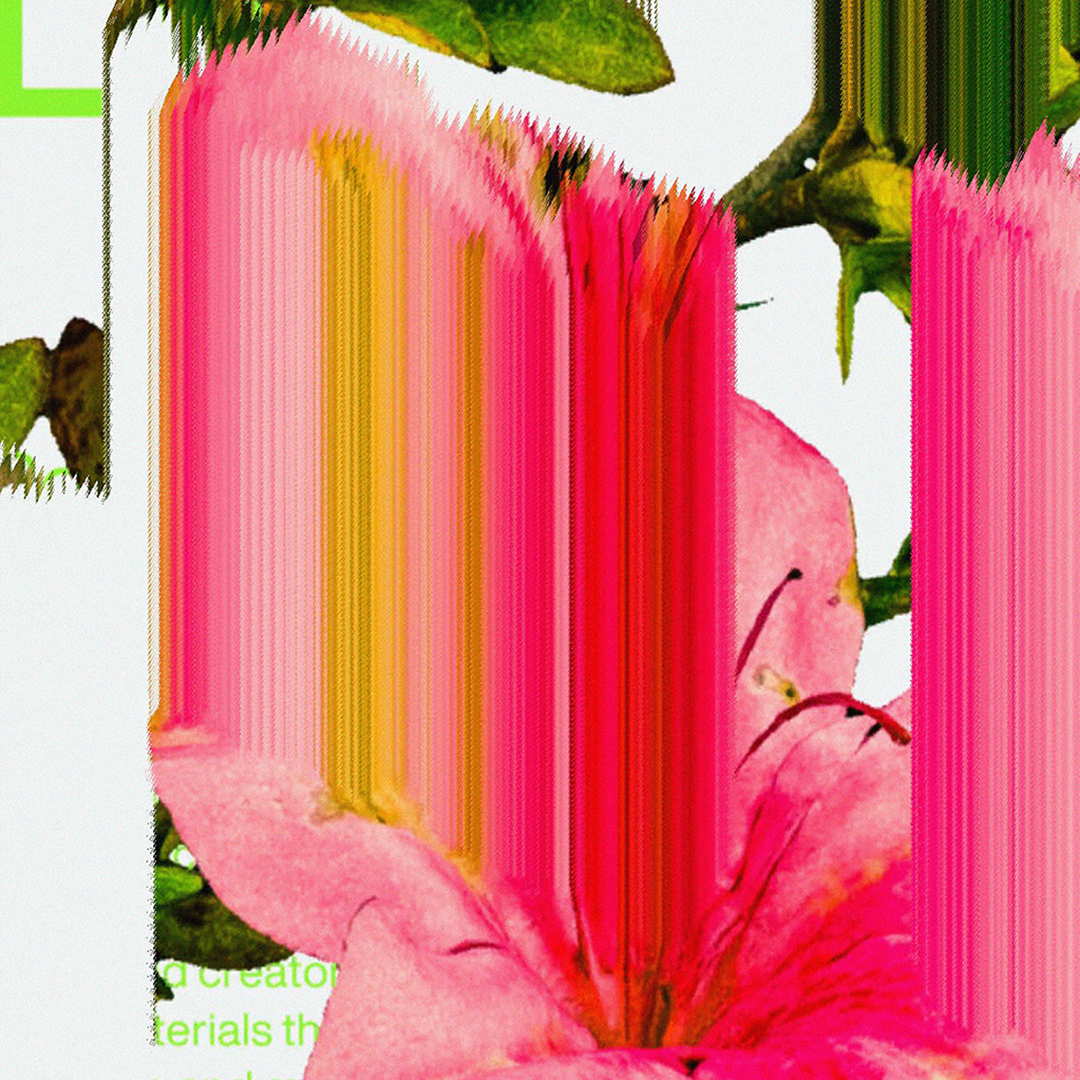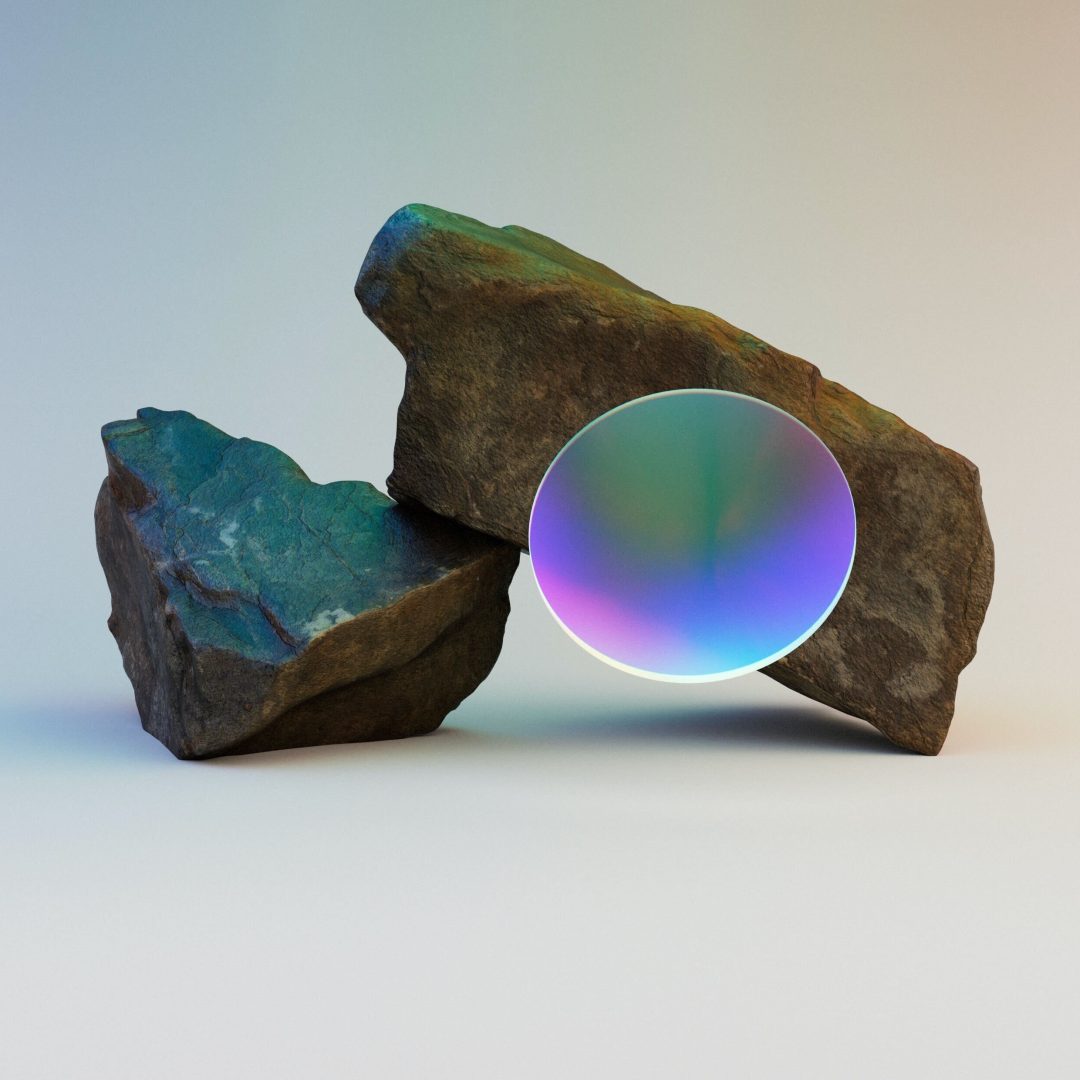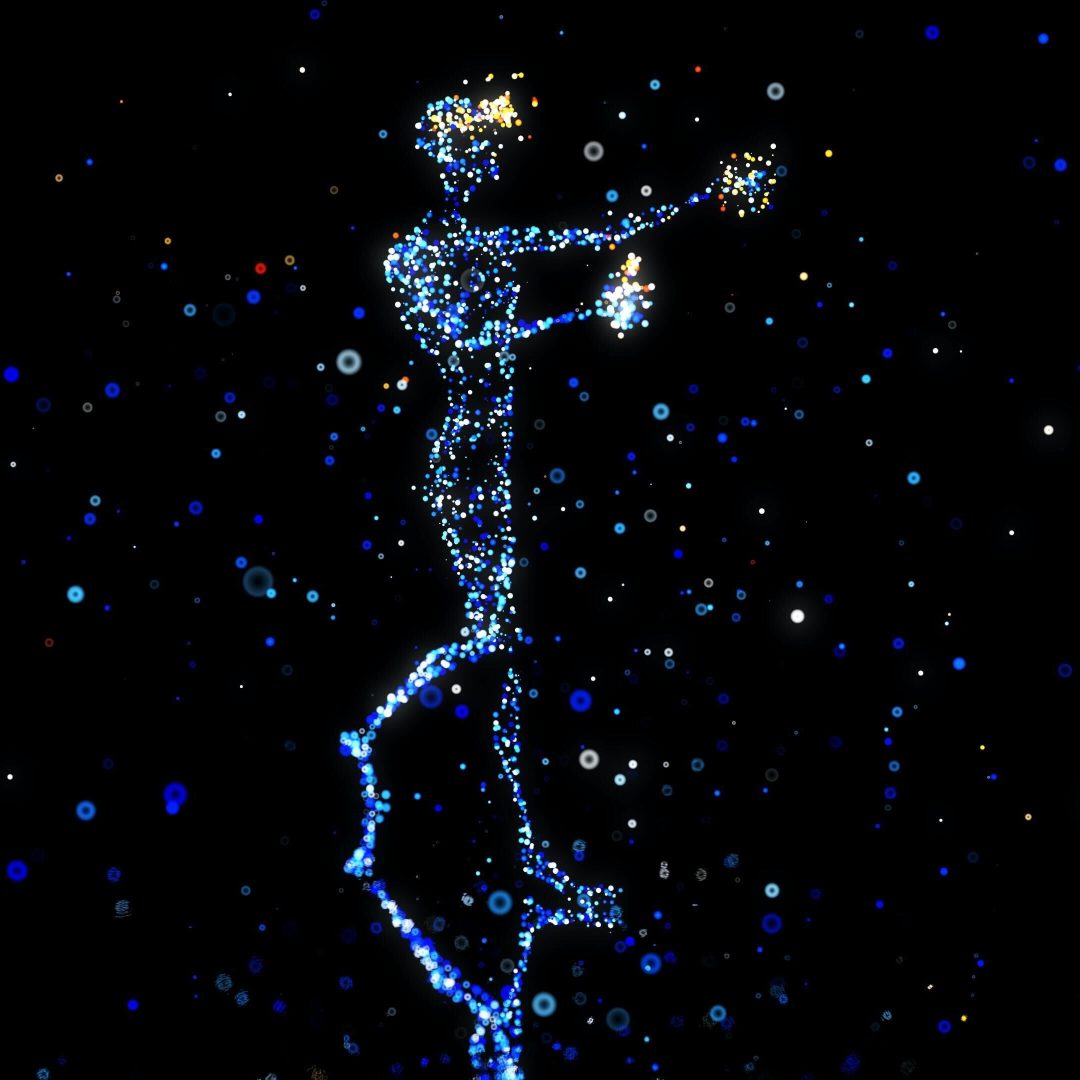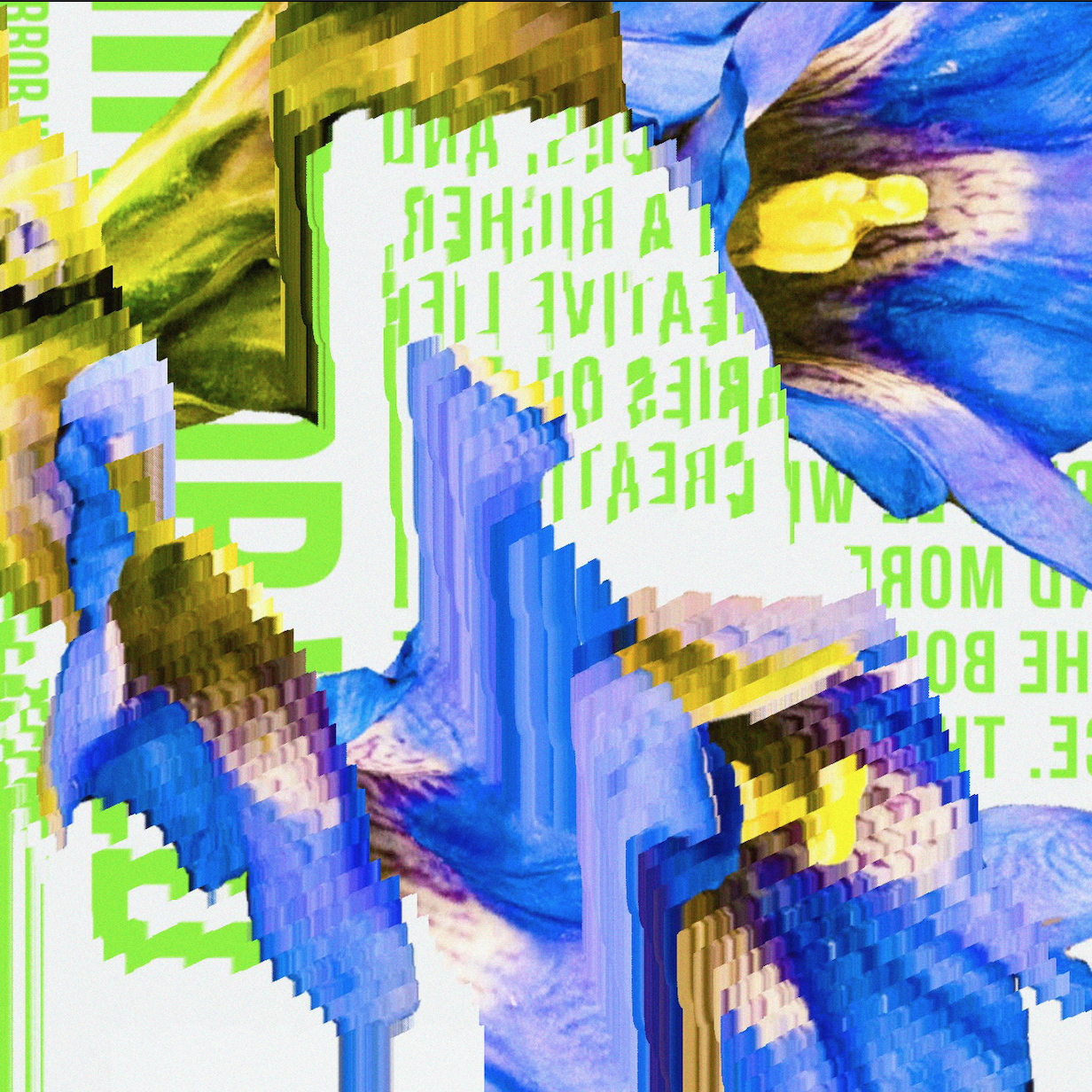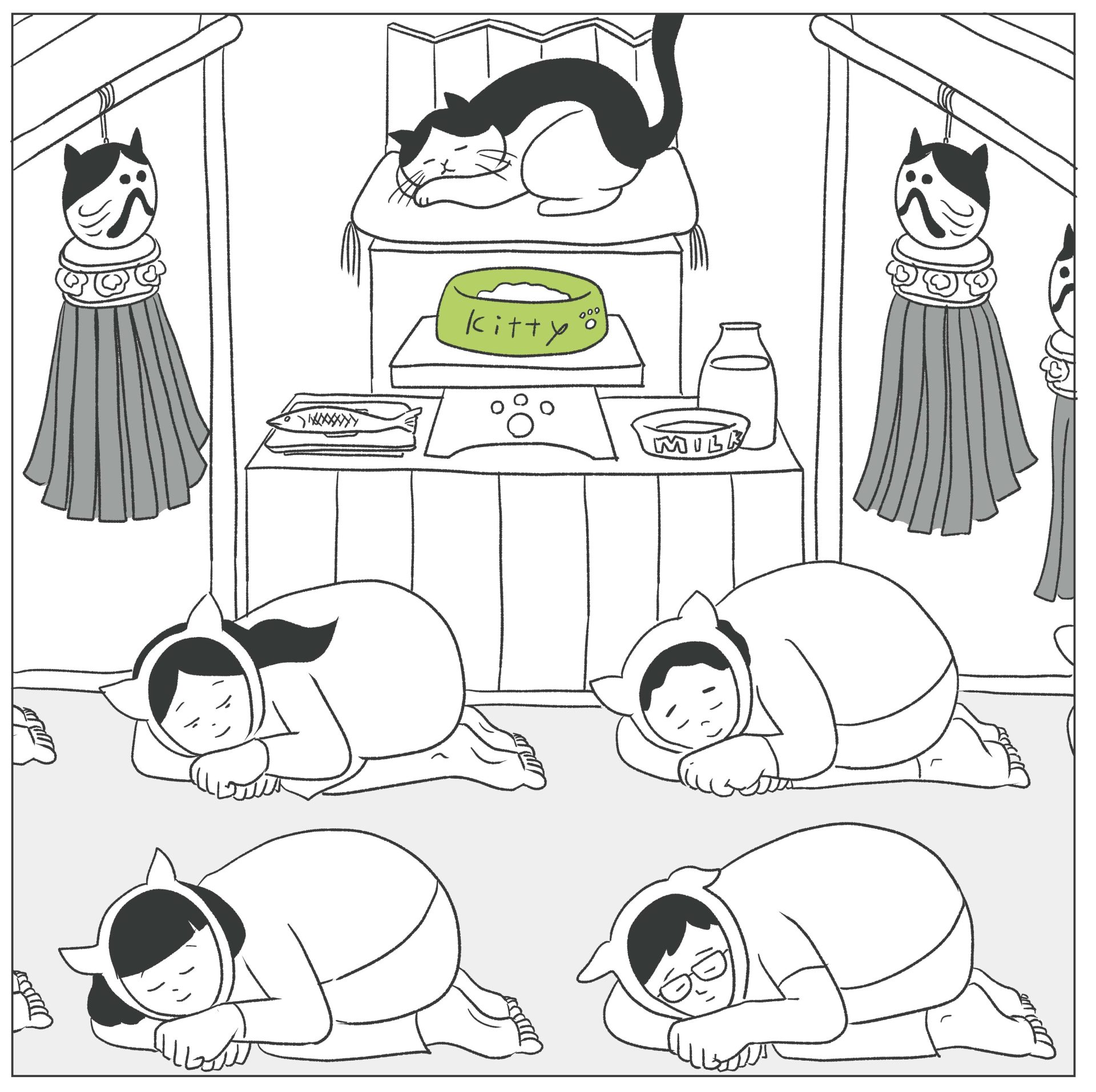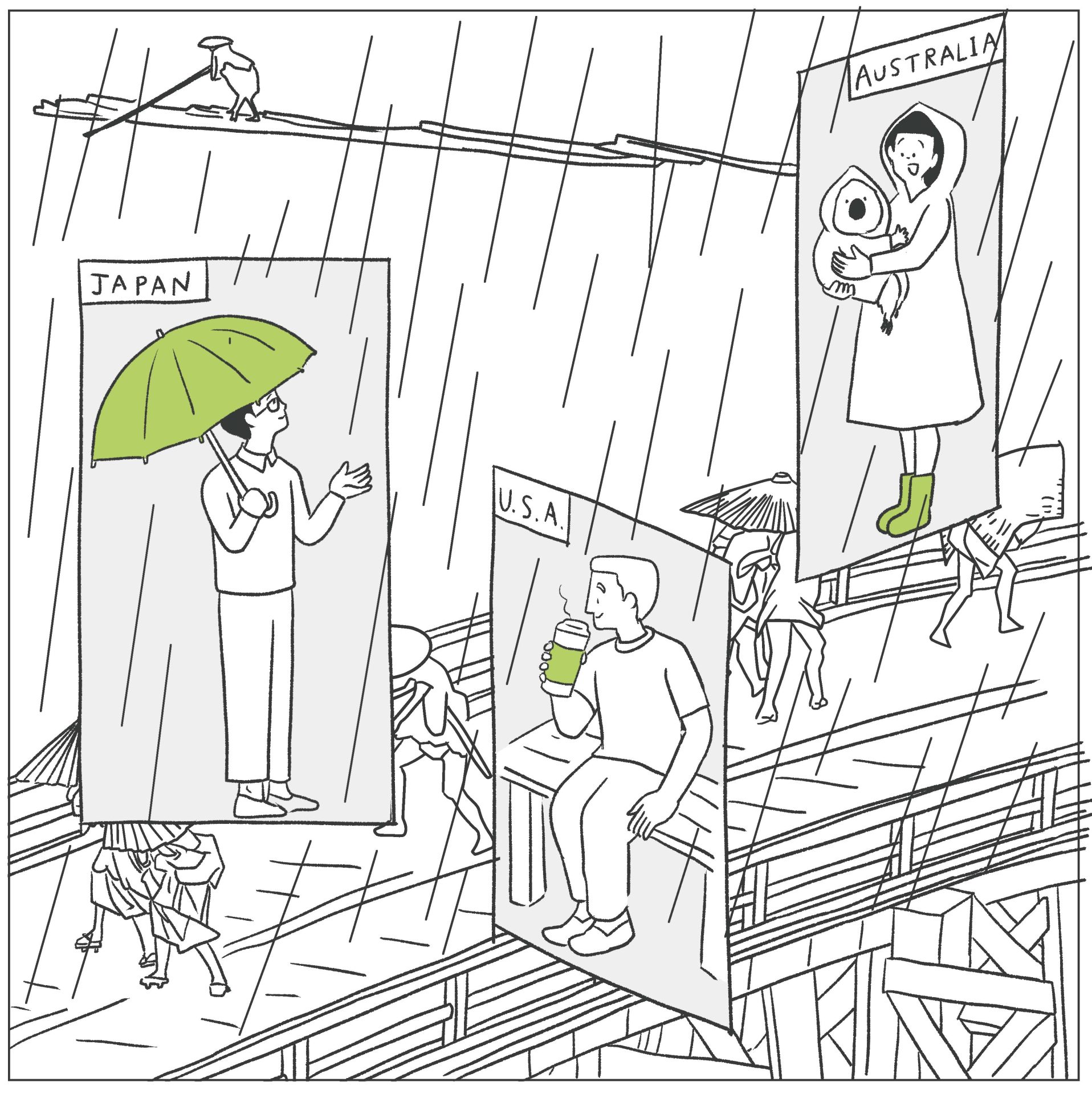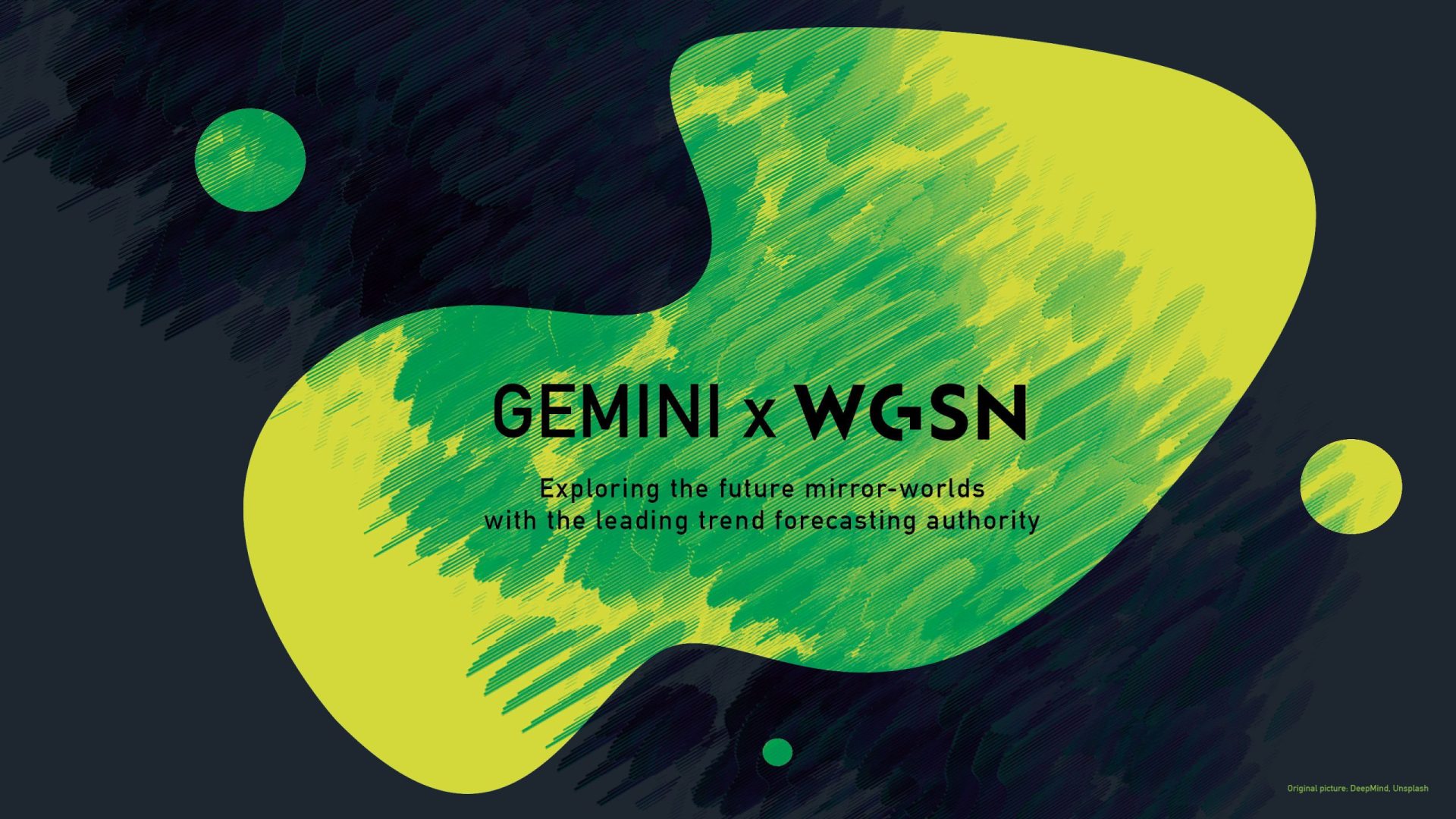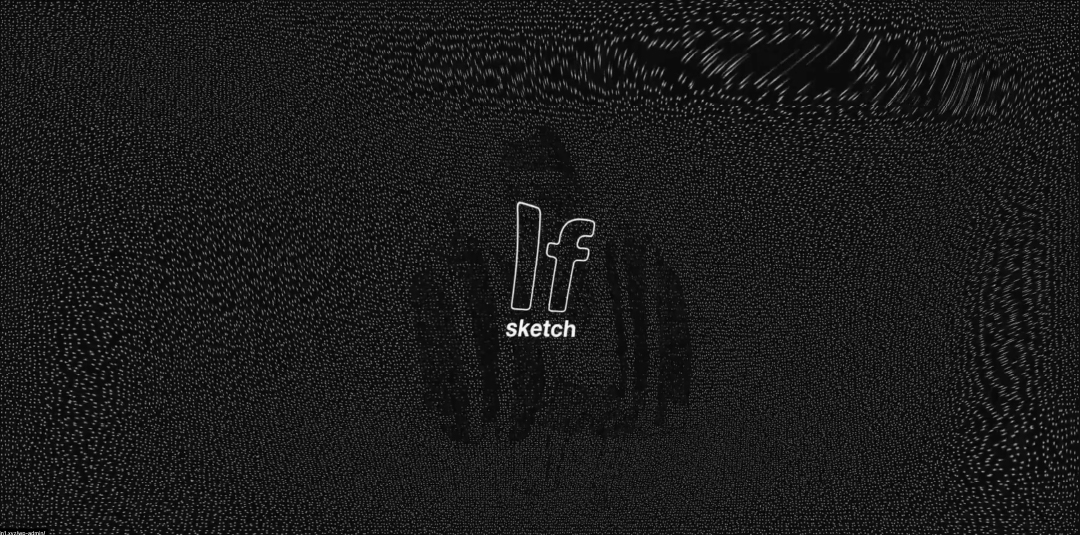Photo courtesy of Tomihiro Kono
Hair artist Tomihiro Kono has provided wigs for Björk, NewJeans, HYUKOH, Tetsuko Kuroyanagi, and many others. Throughout his long career, Kono has attracted attention not only in the fashion industry, but also in the street and art worlds with his head props that seem to move between 2D and 3D, and wigs with spray-painted anime eye designs.
In addition, the AR filter for wigs was announced so that they can be enjoyed in stay-homes during the pandemic of 2020. What kind of fun and pleasure is there in dressing up in each of the worlds, physical and virtual?
We interviewed him while looking back at some of his major works, including Fancy Creatures, a series of wigs that use real hair to create shapes that look like imaginary creatures.
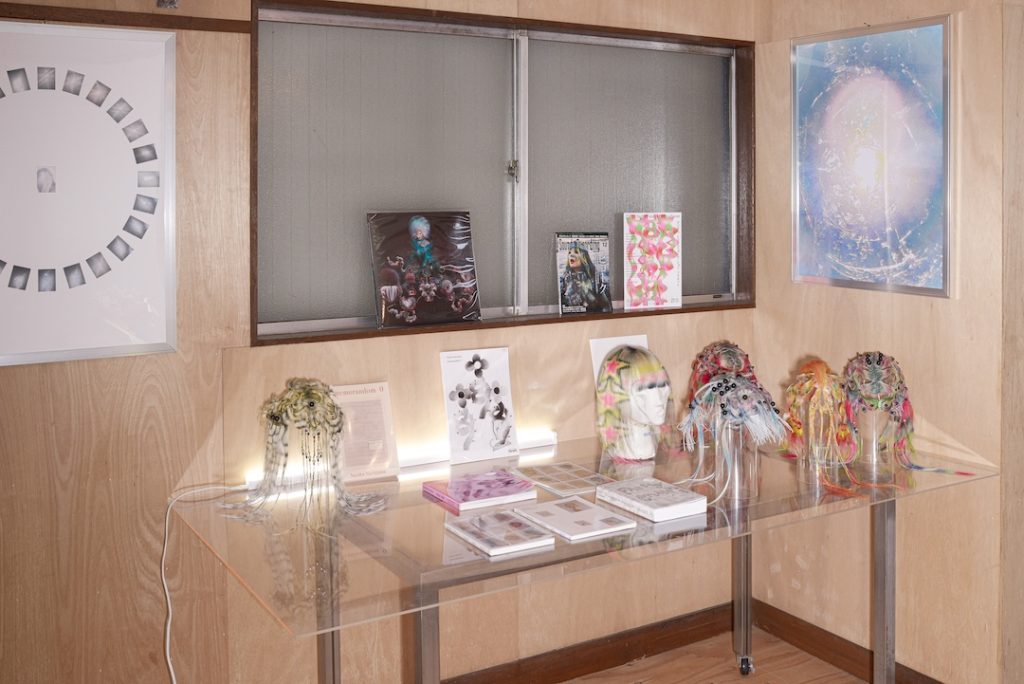
Wigs are “composite art” of hair expression. Collaboration with Junya Watanabe, etc.
-Mr. Kono started his career as a hairstylist, and after moving to the UK in 2007, he expanded his field independently as a session stylist as a hair and head prop artist. Then, after working in New York, he started making wigs in 2017. What were your thoughts behind this transition?
Kono: Originally, I longed for a job where I could create something from 0 to 1. A hairstylist’s job is to design a hairstyle that takes into account the bone structure and hair quality of the model who will be used as the material, and to design a hairstyle that suits not only the model but also the customer’s needs and desires.
Session stylists, on the other hand, are responsible for working as a team to create a single image, including the expression of the momentary hair shape in the photo and the design of the head prop.
I thought that a wig would allow me to incorporate the balance of technique and expression that I had accumulated up to that point, and also leave it behind as a work of art. I think of wigs as the final form of the path one should follow when working with hair, or rather as a “composite art”.

Wig artist. After working at a hair salon in Harajuku, he moved to the UK in 2007 to work as a session stylist, and has participated in the Paris Collection runway show 9 times since 2013 as Junya Watanabe’s hairstylist. He moved his base to New York in 2017. He has expanded his activities into the world of wigs as well as sessions, and has collaborated with Björk and NewJeans on numerous occasions. After returning to Japan, he also manages the community space “konomad” as a curator. Photos are the wigs exhibited at “DXP (Digital Transformation Planet): Towards the Next Interface”
-Mr. Kono, you also published a collection of your work HEAD PROP studies 2013-2016 in the US just before you started producing wigs. It was very interesting to see your innovative ideas and the process that led to the output.
Kono: Thank you very much. This collection of works documents the path and inspiration I followed to create the headpiece.
This work was created when I was in charge of hair & head prop direction for Junya Watanabe Comme des Garçons, and was conceived as a development diagram (diagram) for haircuts used by hairdressers. The diagram is used for training in cutting, and it enhances the understanding of the structure of the hair by saying, “This is the shape that will be created when the hair is cut this way.”
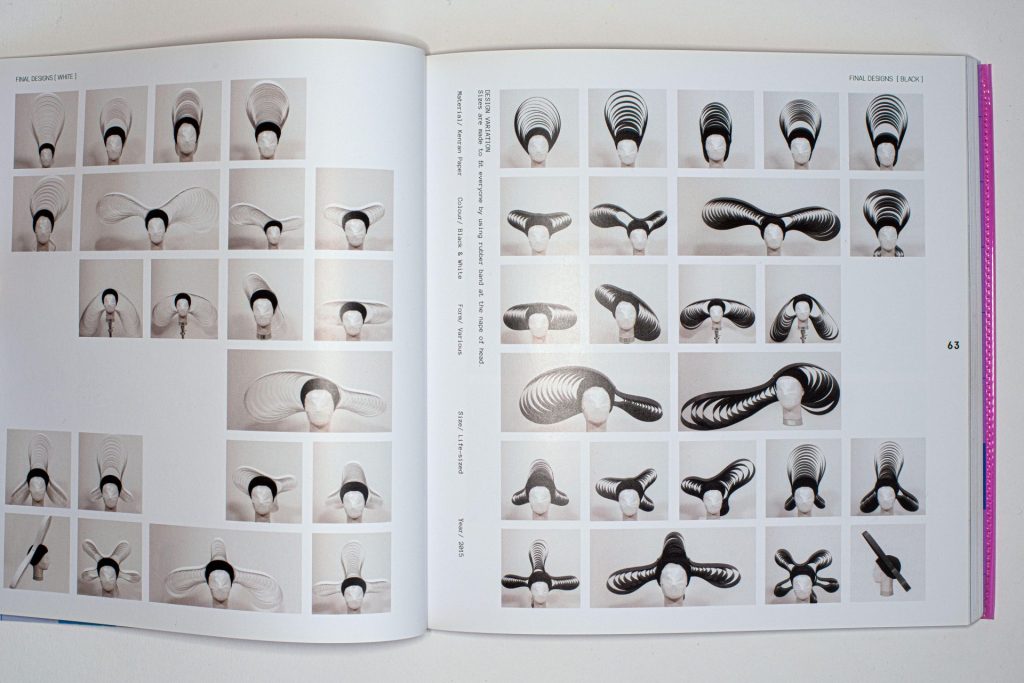
-Actually, a model wearing this head prop walked the runway at the 2015 AW JUNYA WATANABE COMME des GARÇONS show, right
Kono: Yes, I created the head prop based on the idea that if a 2D diagram is actually developed into a 3D headdress, it will create a geometric design that has never been seen before.
2015 AW JUNYA WATANABE COMME des GARÇONS show
-It’s interesting that you look at the head structurally, as if you were an architect or a product designer.
Kono: With haircuts, the approach is to cut the hair that is already there, which is a subtraction approach, but with head props and wigs, the focus is on adding to the hair. Therefore, the human head can be considered a blank canvas, which allows for greater freedom of expression.
How Tomihiro Kono made wigs with a long history look new
-What do you focus on when creating wigs?
Kono: Wig production techniques have been established for more than 100 years, so rather than creating wigs with a high degree of perfection, I have been conscious of how to express them in a new way.
While traditional handmade wigs are made by attaching individual strands of hair to the lace cap itself, machine-made wigs using “wefts” (mino-hair; the hair is sewn together at the top of the bundle, looking like ‘mino’ [a type of old Japanese cloak]), which have become mainstream in recent years, are assembled and finished with a sewing machine.
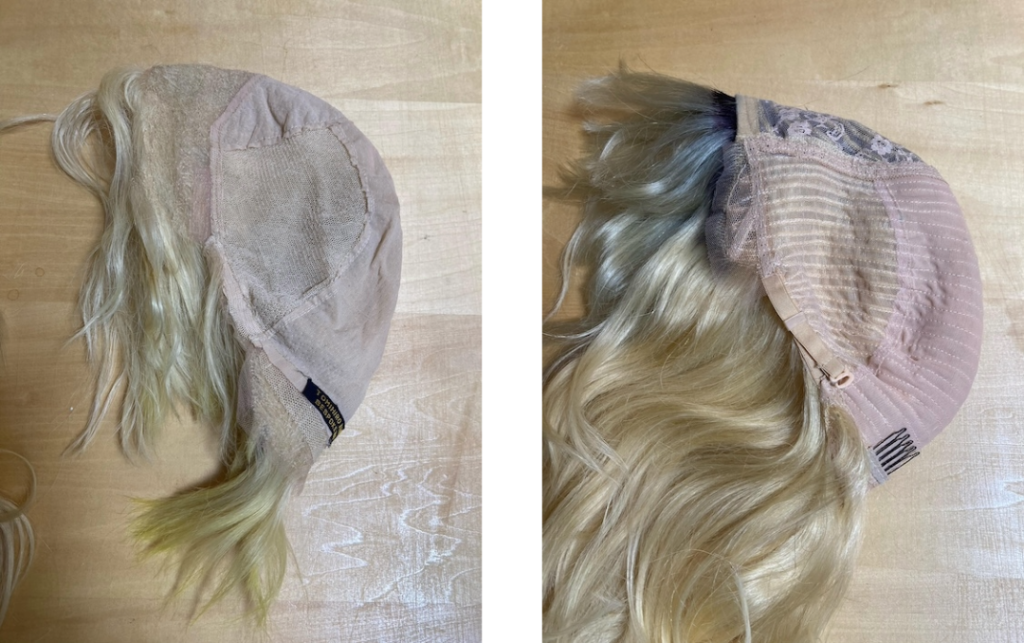
Kono: The Fancy Wig Series is a new type of wig that takes advantage of the characteristics of machine-made wigs to pursue newer expressions and greater freedom for the wearer. There is a joy in striving for such a gap in expression that seemed to exist, but did not until now.
View this post on Instagram
Behind the scenes of the collaboration with Björk. The wigs created for Fossora were the inspiration for Fancy Creatures
-The wigs in your photo book Fancy Creatures, published in 2023, are, as the title suggests, reminiscent of creatures and fascinating in their unique colors and shapes. What inspired you to create this body of work?
Kono: Fancy Creatures is a series of wigs I created for the artist Björk. At first I was asked to create a wig for the album Fossora and the concept was “slime mold”.
From there, my research led me to ideas of plants, deep sea fish and other creatures that I had never seen in nature, and I was inspired by the freshness that I could not get from just looking through the design archives. So I also made wigs that look like lizards, frogs, crabs, shrimp, and microorganisms.
View this post on Instagram
Kono: Basically, I started by freely suggesting wigs that I had made, and had many discussions with Björk herself about the colors. I tried to make the wigs look natural, even if I used bright colors, and I watched Björk’s reaction to see if she liked them or not.
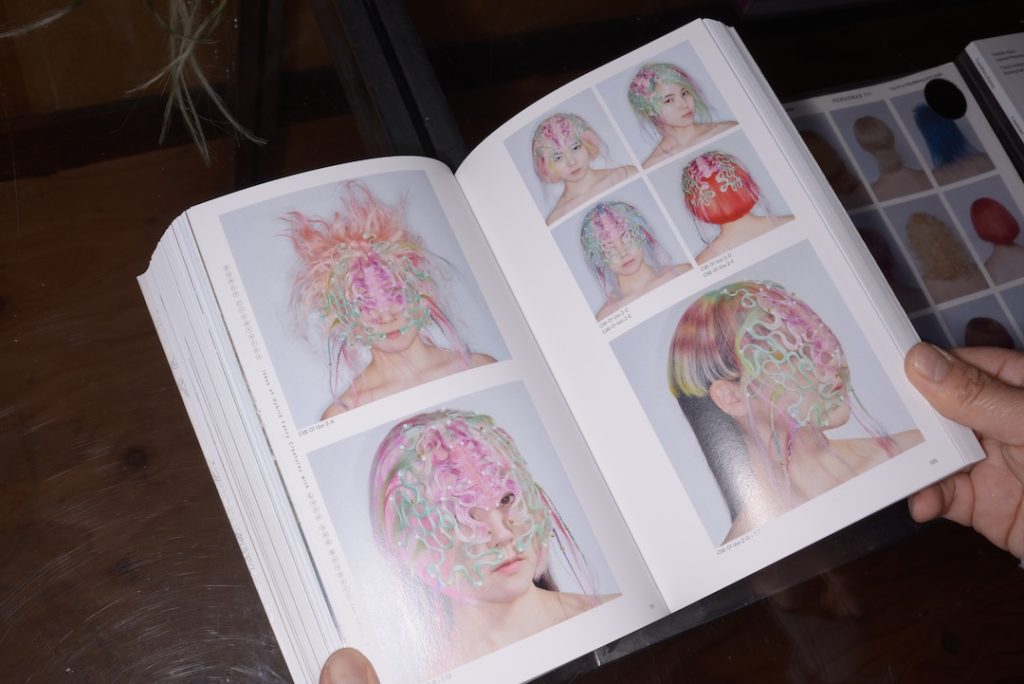
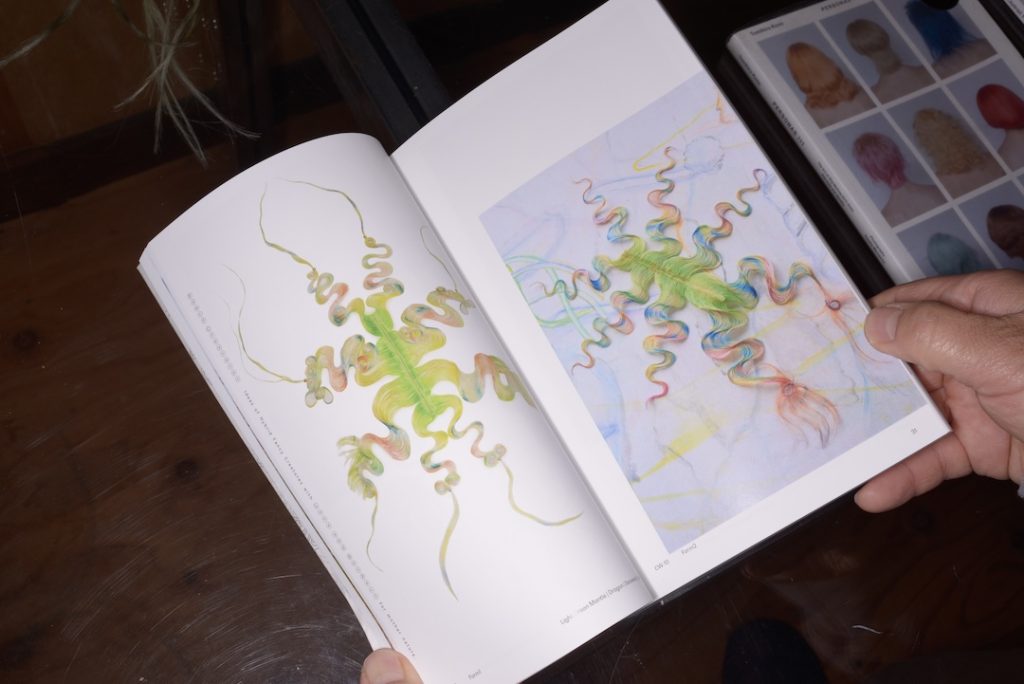
-When Björk visited Japan last year, it was impressive to see her wearing one of your wigs. How many variations did you come up with?
Kono: We made about 100 actual wigs throughout the project. She wears them when she DJs at events and in her private life. I have always respected Björk as an artist, and it was one of my goals to work on her hair one day, so I felt like my dream came true
As for the actual collaboration, I really enjoyed the exchange of musical sensibilities in areas I could not have imagined.
“Fancy Wig” to update your natural hair
-What have you realized through your many years of wig making?
Kono: I realized once again that the concept of “beauty” is changing dramatically. For example, the Fancy Wig Series is a wig like a hair accessory that can be clipped on and off, but it is popular as a new kind of wig because it is easy to put on and take off, and it also looks good on Instagram.
It also became accepted on the street, coinciding with the current “Y2K*” craze. I originally started making them for a fashion brand show, but it was refreshing to see them accepted on the street.
*An abbreviation for “Year 2000”, a fashion that incorporates styles that were popular around the year 2000
View this post on Instagram
Kono: I thought that hearts, stars, and other motifs as a play on extensions were possible as a design effect for hair, but more and more people are going to beauty salons these days to have patterns applied to their natural hair.
I thought I could influence a kind of instantaneous and dynamic flow of young people thinking, “This is cool” and “Isn’t it cool?”
-In fact, the Fancy Wig is different from traditional wigs in that it can be used as an accessory or as makeup, which I thought was very innovative.
Kono: Wigs used to be worn to hide all your natural hair, but I think the Fancy Wig has a much stronger digital element, as if to update your natural hair.
Some people wear it on their hair, others on their underwear or collar. Some people attach it to their bags like a key chain, and everyone plays with it in their own creative way.
They use it in 2D and also in 3D, with creative ideas that go beyond the original idea. It’s interesting because they upload their ideas to social media, so it’s like a digital collaboration.
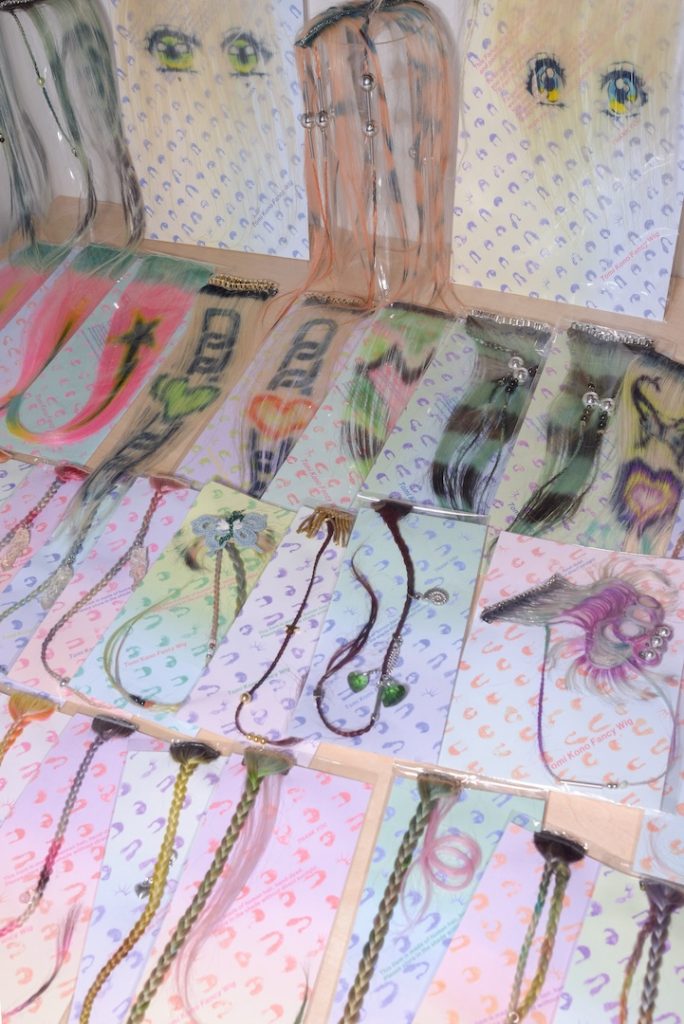
AR filter that fulfilled a desire for transformation
-The AR filter, which allows users to wear Mr. Kono’s wigs on Instagram, became popular around the world during the pandemic. Why did you start offering AR filters?
Kono: Before COVID, I was working on a project called “PERSONAS 111,” in which I made 111 different full wigs for one model. It was also an interactive exhibition where the wigs were hung from the ceiling and visitors could put their heads inside the wigs and take selfies.
I was able to exhibit in Paris and Tokyo, but the New York exhibition that I had planned to do in conjunction with the launch of the photo book was not possible because of the lockdown. I got a lot of DMs from people asking, “When are you going to do it?” At that time, I released the “PERSONAS” series of AR filters that could be used anywhere.
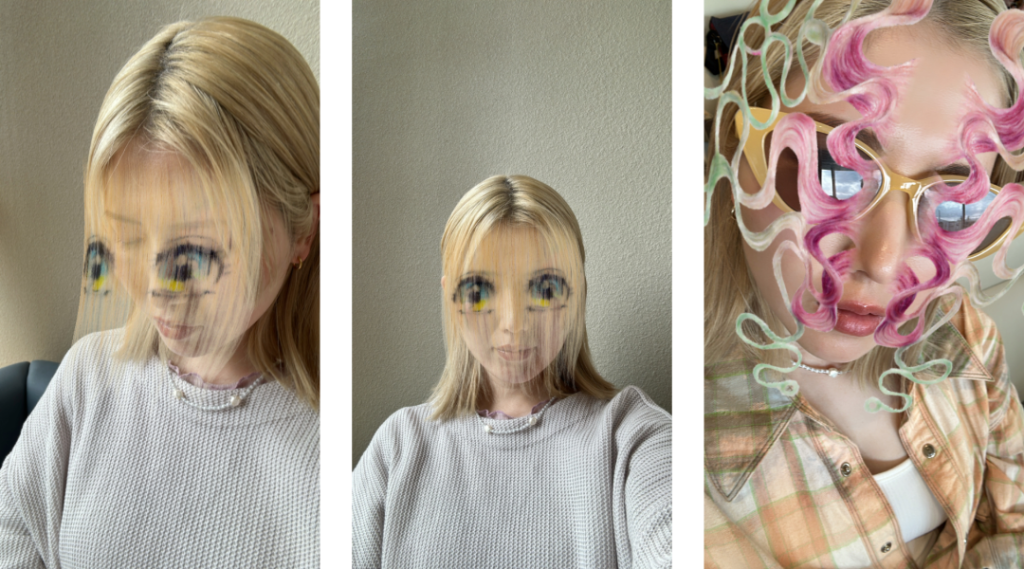
Kono: When we finally released it, a huge number of people were using the filter, and the number of followers on Instagram was growing at the rate of about 2,000 a day, so it spread very quickly.
-The AR filter is a play on processing the physical body virtually. What do you feel is the difference between actually wearing a wig and wearing an AR filter?
Kono: I think it is the fact that it is easy to transform yourself. It takes a lot of time and money to actually try on a wig, doesn’t it?
At the time of the lockdown, the situation was very serious, and the desire to transform oneself, such as dressing up in one’s own home or wearing cosplay costumes, seemed to have become apparent. I think this is where the AR filter came into the market as “just the thing for a quick and easy makeover”.
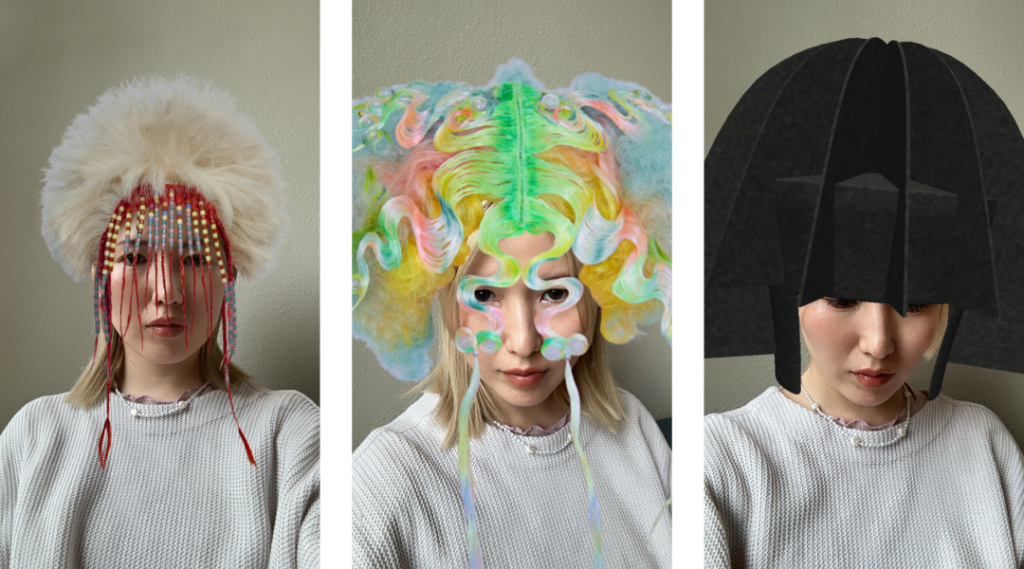
Where hair artists who have experienced 2D, 3D and AR end up
-You participated in the exhibitions “DXP (Digital Transformation Planet): Towards the Next Interface” and “DXP2 (Digital Transformation Planet 2)” at the 21st Century Museum of Contemporary Art, Kanazawa until the end of March 2024. You also exhibited a variety of works there, including those using AR filters, but did you make any discoveries?
Kono: It was a different kind of fun, because what used to be a selfie-like experience that you could only enjoy on your smartphone was now interactively displayed on a large monitor in a real space.
With Instagram’s AR filter, you could choose your own wig design, but in the exhibition, once projected onto the monitor, you were semi-forcibly and randomly fitted with a wig. Since they were projected even if the viewers themselves did not ask for them, everyone from the elderly to children enjoyed the exhibition while being surprised.
In addition, the wigs, which floated like jellyfish in the exhibition space, were projected onto the background of the monitor, giving viewers the feeling that they themselves were part of the work. I also found it interesting to have them tagged and posted on social media, as if I were talking to the visitors without having to go to Kanazawa, as a new form of communication.

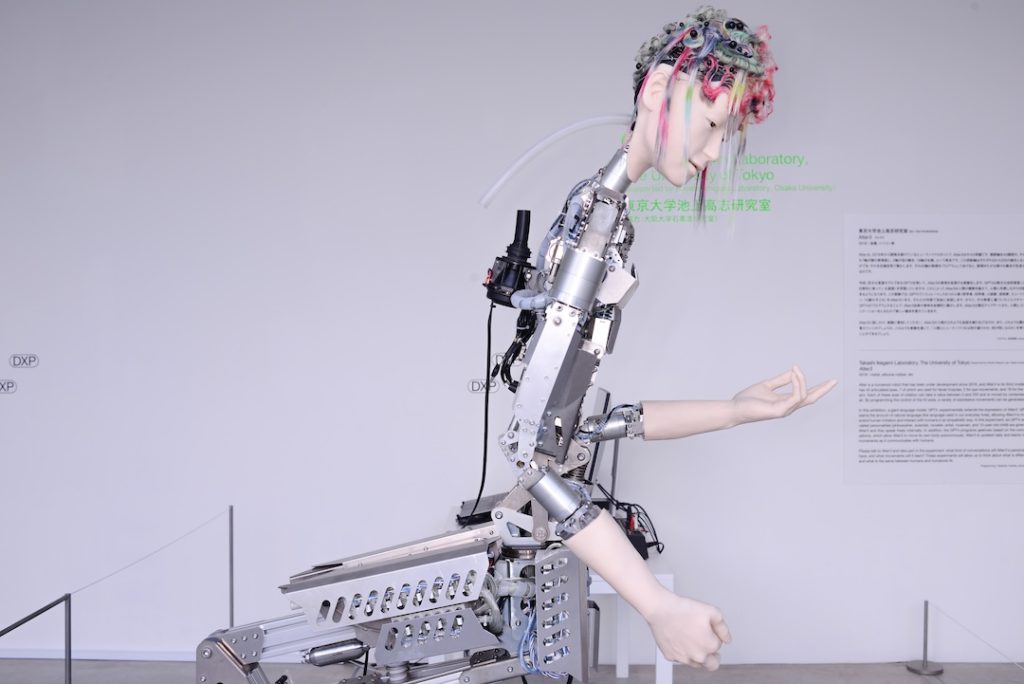
-Mr. Kono, you have been actively challenging various expressions from 2D to 3D realistic works and AR. What are some of the areas you would like to challenge in the future?
Kono: I haven’t found anything yet, but I would like to continue to take on challenges that will lead to discoveries I never thought I would make.
For example, I would like to use digital technology to create a new material such as hair. Since hair is a finite material, it would be great if we could artificially create an alternative to hair that would have less impact on the environment. I wonder what kind of materials and technologies are available for this purpose.
Eventually, it would be nice if we could spread this as a Japanese technology to the rest of the world. Of course, I am also thinking about recycling hair itself. The large amount of hair that is thrown away every day in beauty salons could be used as fertilizer or as a material for fabrics. And finally, people. Recently, I have felt a sense of mission to pass on my experiences and the skills I have acquired to academics and students, connecting them to the future.
Guest Profile
-

Tomohiro Kono
Tomohiro Kono
Wig artist. After working at a hair salon in Harajuku, he moved to the UK in 2007 to work as a session stylist, and has participated in the Paris Collection runway show 9 times since 2013 as Junya Watanabe’s hairstylist. He moved his base to New York in 2017. He has expanded his activities into the world of wigs as well as sessions, and has collaborated with Björk and NewJeans on numerous occasions. After returning to Japan, he also manages the community space “konomad” as a curator. Photos are the wigs exhibited at “DXP (Digital Transformation Planet): Towards the Next Interface”
Co-created by
-
宇治田エリ
ライター
宇治田エリ
ライター
Freelance writer and editor. Specializes in communication design and sound art. I try to capture and convey the “positive cycle created by expression. "
Tag
Share
Discussion
Index
Index
Archives
Recommend
Recommend
Recommend
Recommend
Recommend
-

{ Community }
Working In The Metaverse
Working In The Metaverse
Working In The Metaverse
-

{ Special }
“Imaginary Festival” Generator
“Imaginary Festival” Generator
“Imaginary Festival” Generator
-

{ Community }
Opening Yourself Up To The Unknown: Monk Shoukei Matsumoto Discusses Well-Being In The Metaverse Era
Opening Yourself Up To The Unknown: Monk Shoukei Matsumoto Discusses Well-Being In The Metaverse Era
Opening Yourself Up To The Unknown: Monk Shoukei Matsumoto Discusses Well-Being In The Metaverse Era
-

{ Special }
Shared Weather Experience Viewer
Shared Weather Experience Viewer
Shared Weather Experience Viewer
Hot topics
Hot topics
Hot topics
Hot topics
Hot topics
-

{ Community }
Scent Transcends Memory to Change Behavior. The Future of Digital x Olfaction, by Scent Marketing Pro Gouchi Hamada
Scent Transcends Memory to Change Behavior. The Future of Digital x Olfaction, by Scent Marketing Pro Gouchi Hamada
Scent Transcends Memory to Change Behavior. The Future of Digital x Olfaction, by Scent Marketing Pro Gouchi Hamada
-

{ Community }
The stage is a restroom designed by Tadao Ando. Possibilities of media mix that GEMINI pioneers.
The stage is a restroom designed by Tadao Ando. Possibilities of media mix that GEMINI pioneers.
The stage is a restroom designed by Tadao Ando. Possibilities of media mix that GEMINI pioneers.
-

{ Community }
“Conveying the Moment of ‘Now’ in History: Catalan Artist Xavi Bové’s Light Expressions”
“Conveying the Moment of ‘Now’ in History: Catalan Artist Xavi Bové’s Light Expressions”
“Conveying the Moment of ‘Now’ in History: Catalan Artist Xavi Bové’s Light Expressions”
-

{ Community }
“Designing with Heart: How Amanda Talbot is shaping a better future through emotionally intelligent AI”
“Designing with Heart: How Amanda Talbot is shaping a better future through emotionally intelligent AI”
“Designing with Heart: How Amanda Talbot is shaping a better future through emotionally intelligent AI”
-

{ Community }
Unearthing the Future: How ancient history can guide modern innovation with Darius Arya
Unearthing the Future: How ancient history can guide modern innovation with Darius Arya
Unearthing the Future: How ancient history can guide modern innovation with Darius Arya
-

{ Community }
Interview with Masayoshi Yokoyama from Ryu Ga Gotoku Studio. Talks about reality in games and the future of the industry
Interview with Masayoshi Yokoyama from Ryu Ga Gotoku Studio. Talks about reality in games and the future of the industry
Interview with Masayoshi Yokoyama from Ryu Ga Gotoku Studio. Talks about reality in games and the future of the industry
-

{ Community }
The new form of pilgrimage. What is the border of real and fictional worlds that Petra Szemán pictures?
The new form of pilgrimage. What is the border of real and fictional worlds that Petra Szemán pictures?
The new form of pilgrimage. What is the border of real and fictional worlds that Petra Szemán pictures?
Special
Special
Special
Special
Special
Featured articles spun from unique perspectives.
What Is
“mirror world”...
What Is
“mirror world”...
What Is
“mirror world”...
What Is
“mirror world”...
What Is
“mirror world”...
“mirror world”... What Is
“mirror world”... What Is
“mirror world”... What Is
“mirror world”... What Is
“mirror world”...
Go Down
Go Down
Go Down
Go Down
Go Down
The Rabbit
The Rabbit
The Rabbit
The Rabbit
The Rabbit
Hole!
Hole!
Hole!
Hole!
Hole!
Welcome To Wonderland! Would You Like To Participate In PROJECT GEMINI?

